|
Rebirth of an icon: Crowds flock to see Rome's Trevi Fountain burst back into life after
£1.4million transformation
Read more: http://www.dailymail.co.uk/travel/travel_news/article-3301612/Now-s-fashion-makeover-Rome-s-Trevi-Fountain-opens-following-1-4million-Fendi-transformation.html#ixzz3rlFugqx6
1 Comment
If you really study the right hand of the David statue by Michelangelo, you'll notice the clenching and tensing of the muscles. His veins bulge while adrenaline floods his brain. You see, David has just decided in his mind to fight Goliath. He is determined. His hand shows that. He is in that place in between decision and action. It's that split second moment before jumping into a pathway which will change his life forever--except he still doesn't know the outcome. All he has is determination and prayers--and something heavy clenched in his grip... he'll have to load his sling fast... faster than ever before...
--Jerry Finzi
If you enjoyed this post, please tell your friends about us. Ciao!  Addeo's Bakery Addeo's Bakery
Arthur Avenue is the heart of the Bronx's Little Italy, its epicenter being at Arthur Avenue and 187th Street in the Belmont-Fordham neighborhood of New York City--and even going a bit beyond to Prospect Avenue. Although not as Italian in terms of the local residents as in years past, it is a haven for all sorts of Italian restaurants and many types of purveyors of Italian specialty foods. The lively, tight streets are lined with delis, bakeries, fish markets, green grocers, cookwares, butchers, cheese shops and more. This is not a tourist trap, as is the "Little Italy" in downtown Manhattan. This is the real deal.
Arthur Avenue was named after President Chester A. Arthur in the 1800s. Many Italians settled in the neighborhood while being employed to build build the Bronx Zoo. Once the word got out about how nice the neighborhood was (more like the country than down on the Lower East Side) and with the added convenience of the recently built Third Avenue elevated train ("The El"), Italian immigrants from lower Manhattan migrated north, swelling the Italian population of the neighborhood to 100,000 in the early 1900s.
There are special events held in the neighborhood that are well worth attending. One is the “Dancing of the Giglio” and the Feast of St. Anthony. This ancient tradition originated in Nola, Italy in 409 A.D. and is still celebrated today. The giglio is a custom, hand-made wooden structure, measuring 50 feet high and weighing several tons. It takes over 100 paranza (lifers) to hoist this enormous structure up on their shoulders as they carry it through the streets while performing various ritual maneuvers. The Feast of St. Anthony is held in early June every year and features live music, carnival games, rides, and fantastic Italian food.
And although Ferragosto (the end of summer holiday and celebration) in Italy is in August (Agosto), in the Bronx, they celebrate in early September. It's another chance to feast on Italian delicacies and enjoy the festive atmosphere of Arthur Avenue.
While on Arthur Avenue, don't forget to walk through the Arthur Avenue Market, an indoor market with a dozen or so vendors, purveyors and green grocers. Then after you're done buying your cheese, fish, meats and deli specialties, take in a dinner at one of the many Italian restaurants... the offerings here are authentic and far better than the cheap tourist menus in downtown Manhattan's Little Italy. Personally, I'd recommend Emilia's Restaurant. Try their brasciole!
Use the interactive map below to find your way around the neighborhood. Happy eating! --Jerry Finzi We visited the Vatican Museum last October and of course, one of our must-do's on our list (we were Virgin Voyagers to Italy, after all) was the La Cappella Sistina (Sistine Chapel). Being a life-long artist and photographer, of course I had to see the major work of one of my artistic heroes: Michelangelo. To see it, one needs to take a tour of the Vatican Museum itself and go through the one way in, one way out maze following throngs of tour groups and the rest of the masses with the same thing on their own must-so list. We thought we were ahead of the game by booking a "private" tour--a guide just for we three. Boy, were we wrong. Our guide thought he was doing us a favor by going very slow and getting into long-winded descriptions of just about everything we were seeing--at the beginning of the tour. Even though I told him ahead of time to keep it brief for Lucas (12 years old at the time) covering only the things a kid would love hearing about, he kept going on and on and on... so much so, that before we were 25% of the way through the tour, the huge tour groups were passing up by and swallowing us up into their chattering, sweaty, shoving and pushing masses. In the end, we were only allowed 5 minutes to enjoy the masterpiece of the Chapel's ceiling... several of which we spent standing shoulder to shoulder with people who didn't know what they were even looking at--or for what reason--only that it was on their must-do list. There are only benches on the sides of the Chapel, so good luck getting a seat to relax and take it all in (we got a seat for perhaps 2 minutes). Oh, and of course, no picture taking, although people push this rule all the time with their smart phone cameras--with the chance of getting booted out. All in all, not exactly my idea of relaxing and pondering a magnificent work of art. So, I had an idea. If you are a student of art, or someone else who has studied the work of the Renaissance Masters, like the Sistine Chapel, perhaps you could exclude such must-do's from your own list and study the art online, in the comfort of your own home. I've put together a gallery of sorts, of online resources where you can take your time and gaze upon the most minute details of the Sistine Chapel to your heart's content--without putting up with the chattering, cackling, sweat, the disrespect (many wear hats even though it IS a church), the rushing and the great expense. Clicking on each photo will bring you to a high res image... Enjoy your Voyage... And twenty five years after finishing ceiling of the Capella, Michelangelo painted the Last Judgment on the wall of the Sistine Chapel. An older, wiser man and being much closer to his own Final Judgement, the work is markedly different than the metaphorical grandeur of the ceiling's frescoes... perhaps more profound and shocking. CLICK THIS PHOTO ABOVE FOR A 360 DEGREE INTERACTIVE TOUR OF THE SISTINE CHAPEL Move your mouse pointer around to change the view. TIP: There is music on this interactive tour and a zoom function. Scroll in with your mouse wheel or use the = and - buttons in the lower left corner of the display. Place your mouse pointer in the center of the image, turn up the music and scroll very slowly around this masterpiece. It's the best view you can get of the details of the Sistine Chapel. It's almost a religious experience. For a look at our own tour of the Vatican Museum, see:
The Agony And The Ecstasy: The Vatican Tour --Jerry Finzi If you enjoyed this post, please share it with your friends... Ciao! If you've been to Italy before, you will always want to go back for more. If you've never been--yet--you might want to see things first before you plan your trip. Well, here's a great way for Voyagers to take a peek at Italy for a refresher or simply to check things out before you head of to la Bella Italia...
Live Cams. The Skyline Webcams site has the largest collection of webcams in Italy. Check out the progress of the renovations to the Trevi Fountain or simply look at that glorious view of the Amalfi Coast that you remember so well--all live! So, sit back, click on a few locations, and enjoy your armchair Voyage... Click HERE to visit the live webcams! --Jerry Finzi 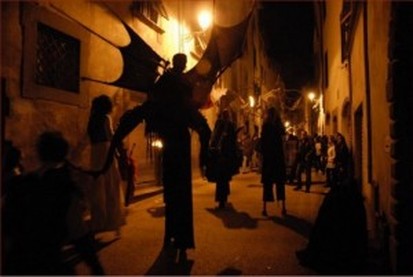 Yes, even in Italy, there are folletti (goblins), mostri (monsters) and fantasmi (ghosts) this time of year. The more traditional time of year for people dressing up as all sorts of strange creatures in Italy is the two weeks before Lent, for Carnevale, but in the last several years, Halloween is catching on. The Vatican doesn't like the trend, however, because they fear it might change the meaning All Saints and All Souls Day (November 1 - 2) from a day to cherish memories of those who have gone before to just another day to get dressed up and act crazy. The Vatican has little to fear however... Most Italians are still celebrating the religious holiday of All Saints Day in addition to just plain having fun for Halloween. In the nineties, young Romans started dressing up for Halloween and shops began selling costumes, candles and other Halloween related items. There are Halloween parties and even dress-up and candy sharing in schools for the little ones. Obviously, younger Italians are driving the trend toward celebrating Halloween through exposure to American TV and Movies and the Internet. Watching episodes of Cake Boss on Italian TV creating Zombie cakes also helps. Films like Halloween, Friday the 13th and ET (remember the Trick or Treat scenes?) all played a part. Just don't expect there to be Trick or Treating in the average village... at least not yet. Spooky Things to Do in Italy For one, visit the catacombs at the Museum and Crypt of Capuchins, a church in Rome where you can visit the underground catacombs where thousands of humans skeletons and bones have been arranged in artistic displays. Artistic, but way creepy when you realize that you are gazing upon actual human remains. Be respectful. Corinaldo, a ghostly looking medieval town in Le Marche, has a festival that lasts for days, with nationally famous actors and comedians, lots of food stands, and even a "Miss Witch" contest. For Halloween, the whole town is lit with candles and torches, spiderwebs in the narrow streets and alleys, a tunnel of fear, music, food, dancing, and fireworks. On a foggy Autumn night, there couldn't be a more appropriate town to hold a spooky festival in. This is one of the more popular Halloween festivals in all of Italy. The village of Ostra, Ancona hosts a unique and very scary festival during several days in late October celebrating La Notte degli Sprevengoli--spirits who bother people while they’re sleeping by jumping on their stomach, causing night terrors. The Hard Rock Cafe in Rome hosts a full blown, American style Halloween costume party, with fun for the kids... carving jack-o-lanterns and more. In the town of Ravenna there is a theme park that goes all out for Halloween each October--for the entire month. The park is called Mirabilandia, and is a recreation of a medieval castle and village that they deck out with ghosts, ghouls and Jack-o-Lanterns for Halloween. In the town of Castrocaro Terme, about ten kilometers from Forli, the Middle Ages comes to life each October. The townsfolk dress as ghosts and witches and head to the Castle for spooky goings on, food, drink and mayhem. Visitors can dine in the wine cellar of the castle, transformed for the night into a Tavern of Mysteries. In the fortress of Bardi, Parma, after tracking a ghost who lives in the castle, Ghostbusters refresh themselves with the "Cold buffet Death", including bloody salami and pasta creations that would be favored by Hannibal Lector, and then they will be poisoned by the best wines from the region. At the Fiesta dalis Muars (dialect: Festival of Pumpkins), in Ampezzo, the courtyards of the historical center are lit only by torches, fireworks and fabulous light shows with clowns and fire eaters. The festival is held on the night of October 31 and is a reenactment of what Italians call "Celtic Halloween". The muars (pumpkins) are carved, then lit and displayed throughout the streets of the town, where you will also find food, fairies, elves, goblins, fire-eaters, jugglers and magical creatures. Night of Thrills in Comacchio - A cursed treasure hunt, a haunted house, demons and ghosts come to life on October 31 centerered around the bridges and canals of the historic center. Comacchio for Halloween night turns into a real horror fantasy city, to accommodate adults and children from 2pm until midnight. Festivities start with with the treasure hunt, themed workshops, tales of terror, Funhouse, the Halloween Parade. Speleo Halloween at Castellana Grotte - On October 30 -31 the Speleological Museum Franco Anelli of Castellana Grotte (Bari), is designed for children. Through readings, games and activities, young participants will play the role of explorers and will discover the underground caves with its inhabitants and its "natural treasures." Murder Mystery Dinner at Grumello Castle- On the night of October 31, diners pilgrims of Castle will have to try to solve a mystery and figure out who is guilty of such a heinous murder that happened between the walls of the manor. Culinary pleasures are also featured with themed dishes made with the same recipes that were used in past centuries. Gropparello Castle - For thrill seekers here's a magical night of bewitched knights between dream and reality, the horror-fantasy path Halloween Castle of Gropparello (Piacenza), October 31, 2019. The ancient castle isolated in the hills of Piacenza is the ideal place to spend Halloween. Experience the fear and pleasures of a buffet dinner with theme setting for families with children or a medieval banquet in costume with entertainment for adults. Night of the Leolandia Witches- Celebrate Halloween dedicated to families with children in Leolandia, within the province of Bergamo. On October 31st is an event with much spooky atmosphere and prolonged fun until late in the evening. There will be many attractions and special guests, a baby dance, a fireworks display on Minitalia, and Mia Leo Witch and Warlock.  Italian Pumpkin Festival If you are in Italy around Halloween time you might want to check out the October Festa della Zucca (Pumpkin Festival) in Venzone, a medieval walled town in northeastern Italy. This festival will really give you that autumn, pumpkin fix that you crave. Although you might not find many Jack-O-Lanterns there, you will find pumpkins and squash of all colors, shapes and sizes--giants ones, too. There is food, art, music, and dancing and prizes are awarded for the largest, heaviest, most beautiful, and most unusual pumpkins. Children participate in a pumpkin-carving contest, while chefs demonstrate their skill in carving intricate floral designs. So, it looks like there are lots of ways to celebrate Halloween in Italy... take your pick. And while most village children won't be knocking on doors yelling "Dolcetto o scherzetto" (Trick or Treat), there is still a lot of good, scary fun for your entire family.
--Jerry Finzi If you enjoyed this post, please sneak up on your closest friends, and yell BOO! Ciao! 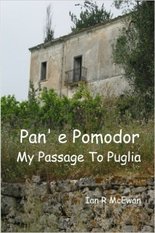 I knew there were local and regional dialects in Italy. I knew that my Mom spoke a dialect from Naples area and my Dad spoke a different dialect--from Molfetta. Mom said when Dad was speaking, it was like listening to a foreign language. Before I Voyaged to Italy I read a book called Pan' e Pomodor that talked about life in Puglia where my Dad was from. It was interesting to learn how local some dialects really were... words and expressions totally changed often from one village to another or from one hilltop to another. But when I stumbled across this map of the dialects in Italy I was dumbfounded. Some even say there are literally thousands of local dialects, not merely hundreds. There are several reasons for this phenomena: Italy didn't become one country until the late 1800s; there was nothing in the original Italian Constitution that specified one national language; many areas of Italy are extremely rural in rough terrain which causes a village to evolve separately from others; Italy has been conquered by many different peoples throughout history--Germans, Turks, French and more; many of the dialects are based on "Vulgar Latin", evolving over many centuries into their own dialect lineages; there are even areas of Italy that speak Griko, a form of the Greek language and villages that speak mixed dialects of Albanian and Croatian. As an example, the small island region of Sardinia has no less than six dialects in use today.
Dialects are used by a majority of Italians and spoken as a primary language by 15% of the population. The strange fact is that many Italians speak their local or regional dialect at home, but speak the Italiano language when outside their home area. For instance, I read in Pan' e Pomodor that parents teach their children never to speak dialect outside of their village, especially when trying to find work in Rome or Milan, because they will be looked down upon. It's a shame because the various dialects and regional differences is exactly what makes Italy such an interesting, rich country. I remember when taking the train from Bari to Rome the conductor made announcements in three languages: English, Italian and Dialetto. So if you're Voyaging in a remote part of Italy and find it difficult to get the locals to understand you--even when speaking your best Italiano, be patient and remember they might only speak their dialect. Enjoy their uniqueness and speak a more universal language... a smile. --Jerry Finzi If you enjoyed this post, please pass it around to your online friends. Ciao! --from BridgePugliaUSA.it
In 80 shots, Madeleine Gehrig's camera “tells” the story of the art works, the scenes, the details and the people one can come across at EXPO in Milan... CLICK HERE to see all of her wonderful photos. (She caputured the beauty of the Milan Expo's art, architecture, jewelry and much more. I highly recommend taking a look at her photos. --J. Finzi) A report from BridgePugliaUSA, a fantastic website newsletter that showcases Apulian livestyle, its artistic and cultural heritage, food, crafts, wine and gastronomy. Figs have always represented one of the most important crops on the Apulian agricultural scene; of all the woody species that have sustained the regional agricultural economy, it could be said that they rank third in importance below the olive tree and the vine. Theirs is certainly a longstanding presence; the immigration of oriental peoples, before the Roman domination, which took place in these lands, and the commercial relationships with the places of origin of those peoples, may have enabled the importation of plants, and amongst these, also of diverse varieties of figs. As Ferdinando Vallese affirms: “Even when they hadn’t transported plants, the dried figs were certainly one of easiest and the most popular long-life foods in the voyages undertaken by the ancient peoples that populated the Mediterranean basin”. ... (click HERE to read the entire article)
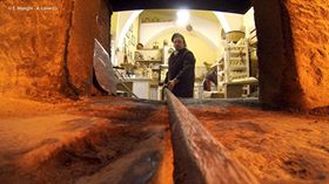 A bread's-eye view of Vito at the Forno A bread's-eye view of Vito at the Forno You will find Antico Forno Santa Chiara in the southern region of Puglia behind the walls of Altamura, where their world famous Altamura bread is made. In fact, Altamura bread can only be made in Altamura... it has D.O.P. designation and is under strict standards to be able to use the name "Altamura" bread. Vito Macella, is the owner, baker and a bit of pirate and showman. He loves to show off his historic forno (oven) that dates from 1423. His is one of of the first public ovens in Altamura, used for cooking meats, biscuits, pretzels and other Pugliese baked specialties, and of course, the famous Altamura Bread. A short walk inside the walls of the historic center and you'll come to the Forno. You can park your car on the Corso Vittorio Emanuale II just outside of the old arched porto where Via Madonna dei Martiri begins. Take a stroll three intersections until Via Corte D'Appello and then you'll see tiny Via Luca Martucci on your left. It's really like a very small piazza with the Forno Antico at the back left corner. You'll probably see a large round table outside with an umbrella over it. There might be people sitting, chatting and eating. Sit with them and join in. When Vito comes out to greet you, tell him you would like una degustazione (a tasting) of whatever he feels like putting in front of you. Depending on what he baked that day, and what other local ingredients he had to create with, he might bring you a plate of antipasto, focaccia, squares of pizza, olives, tomatoes, tiny bocconcin (mozzarella balls), sliced caciocavallo cheese, prosciutto, lardo, or carpaccio--paper thin slices of raw veal marinated in red wine. Oh, of course, he'll always have some of his Altamura Bread for you to taste. We consider unexpected lunch we had at the Forno as one of the best we ate in all of Italy. Inside the doors of the Forno you can see Vito at work at his rustic oven. The stacks of wood are what he uses--early each morning--to fire up this massive cavern. It takes lots of hard work and many hours to get the mass of stone inside the oven up to temperature. The bread of Altamura is made according to traditional methods and with high quality, local ingredients, the two most important (as Vito told me) being the water and the local Durham flour. Altamura bread was the the first product in Europe to bear the D.O.P. logo in the category "Bakery and baked goods". No wonder--it's such a special bread. The loaves are quite large with a shape like a floppy chef's hat or a sort of fat beret. It is airy and full of bubbles inside with a dark brown crust nearly 1/4 inch thick. Unlike Tuscan bread, they use salt in Altamura Bread, so there's loads of flavor. One more thing: The bread can stay fresh for weeks... some say for a month! A loaf we bought Vito's bakery lasted up for several days all the way back to Rome. But again, there's more than just the bread to experience here. Vito offers the biggest dose of Southern Italian hospitality that anyone can find. He is charming, roguish, funny and inviting. You'll meet his kids and sit with strangers talking many languages, but somehow you will all be friends in the end. By all means, buy some bread and other treats here, but just soak in the atmosphere, the personalities and the wine.
Don't pass by Altamura. You won't be disappointed. --Jerry Finzi If you enjoyed this post, please, please, please, tell all your friends about us. Grazie. BARI, Italy - This is Bari’s Column of Justice (Colonna della Giustizia). It is next to the city’s Palace of Justice in Piazza Mercantile. The white marble column, which was put up in 1546, is topped with a ball and has a stone lion crouching at the base. On his chest are the words “Guardian of Justice.” The column was used to punish loan sharks, slackers who didn’t pay their bills and other non-violent offenders. The condemned had to sit on the lion with their bare backsides up in the air and their hands tied to the column. They were left there for a day or two while those they had offended, along with the townsfolk, circled around them and called them names.
--Phyllis Macchioni, This Italian Life 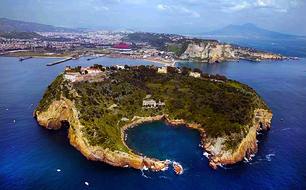 In the time of the Romans, politician and military leader Lucius Licinius Lucullus built a villa on the collapsed and flooded island volcano of Nisida. Another general, Marcus Iunius Brutus (of et tu Brute? fame) also built a villa there for holidays. You might say this was the Cape David of the day where the military leaders went to vacation, to rest, recharge and ponder their next battle while they enjoyed the comfort and pleasures of this island in the sea. Brutus's wife Porcia, committed suicide sometime after learning of Brutus' plan to assassinate Julius Caesar. Some historians think Brutus and Cassius hatched their plan here on Nisida. Some of the archaeological remains on Nisida are supposedly of Brutus' villa. Since then, there have been monasteries, a castle and even a prison on the island. Artists and noblemen would flock to it and even Cervantes was inspired by its mystery and charm. Today there is a rehabilitation center on the island for young boys at risk where they learn trades such as carpentry, ceramics, glass-making and other skills. The NATO Maritime Command also has it's headquarters on the island. Nisida is a volcanic island near Cape Posillipo southeast of Naples. The crescent shaped island is connected to the mainland by a stone bridge. Being a volcano, there is a flooded crater forming the bay of Porto Paone on the southwest side--a small cove, really. It's small--a bit more than a half mile across and juts out of the Tyrrhenian Sea to a height of 350 feet. You can park and walk to the island on the stone bridge or go by boat--renting one at the nearby marina. There is also a large public beach on the mainland facing Nisida and a few restaurants. As with many parts of Italy, some of the area is covered in graffiti and looks worse for wear, but then again, this is Naples. If you walk to the island, you can hike in the non-restricted areas and take in the views of Naples and the surrounding bay and islands. The pebbled beach is surrounded by clean crystal clear water. You can relax in a private shady spot in the woods that cover the island nearly down to the beach. If you sail, you can rent small sailboats and cruise the waters around the island, but if you go by boat, be sure to check out the arch and the grottoes cut into the far side of the island. And, for a little side trip to this Naples side trip... Check out the views on the mainland from Parco Virgiliano, and urban park overlooking the bay and Nisida from it's perch 500 feet on top of another volcanic bluff. The views are staggering. --Jerry Finzi If you enjoyed this post, tell your friends about us. Grazie! 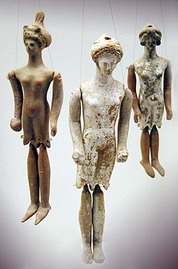 Ancient Greek terracotta marionettes Ancient Greek terracotta marionettes Firstly, a marionetta is a puppet that is manipulated into motion by the use of strings, rods or wires. Marionettes have been found as early as 2000 BC in Egypt, and archaeologists have found terracotta dolls with articulated joints in the graves of children. Aristotle and Plato both wrote about puppetry hundreds of years before the birth of Christ. Some experts claim that the Iliad and the Odyssey would have been performed using marionettes, especially to teach children about the Gods and the battles of good over evil. Italy, being part of the Greek culture before becoming the Roman Empire, was really the birthplace of the marionette. Marionette performances were not just for children, however. They were morality plays for the mostly illiterate masses. Political themed satires would also be portrayed in marionette performances--throwing insults or lewd behavior by marionettes was easier to take from a doll than if delivered by a human performer. Perhaps people made decisions on political matters by watching marionette shows, the same way peoples' political views can be shaped by watching the Daily Show today. In Greece and Rome, clay and ivory dolls dated from 500 BC had articulated arms and legs, with an iron rod extending from the top of their heads. The rod was used to manipulate the doll from above, the same method used in classical Sicilian puppetry. In Sicily, romantic poems were performed in traditional puppet theaters with hand-made marionettes of wood, an art form called L'Opera dei Pupi (Opera of the puppets). Both puppetry and L'Opera dei Pupi and the Sicilian tradition of Cantastori (singers of tales) are rooted in the troubadour tradition in Sicily during the reign of Frederick II, Holy Roman Emperor, in the first half of the 13th century. Still today, you can see this form of puppetry in the puppet theaters of Palermo. The marionettes, which take the form of knights in armor, sword and shield, told their stories and spread throughout Sicily. The shows depicted their amazing feats in small theaters or in the piazza of towns. There were tales of war, rebellion, boasting chivalry. The knights defended their religion, a beloved woman or their lords. They always fought on the side of Right. 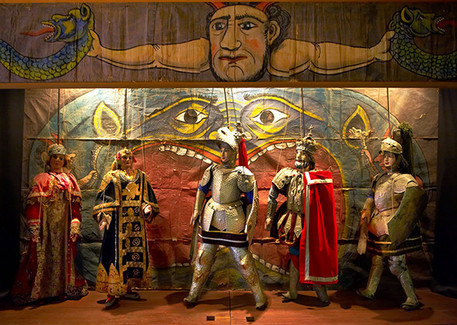 The puppets themselves are made of a variety of materials and can be surprisingly heavy--from 25 to 75 pounds! Wood was primarily used for the heads, torso and limbs. Metal is used for the joints between legs and torso. Long, thin rods support the puppet and to move the right arm (holding the sword) while the left holds the shield. The armor is beautifully ornate copper or tin with ornamental designs distinguishing the different characters. Sicilian puppets are operated from above close to the backdrop of the stage. During battle scenes, both puppets and puppeteers often need to run the entire 20 foot length of the stage. Puppeteers obviously need to be in great physical shape to perform these shows. And historically, puppeteers were not only responsible for the performances, voices and acting, but also built the puppets and props and painted backdrops used in the shows. In the 17th century, not long after they had become wildly popular in Italy, marionette performances spread throughout Europe and to England, where Italian puppeteers would exhibit their performances. Marionette were elevated into high art in Czechoslovakia and Germany, where still today they perform full blown operas. And in Sicily, you can still see the "rod" type of marionette show performed. Taking in a marionette show is is a definite must-do for a visit to Sicily. Here are a couple of links... 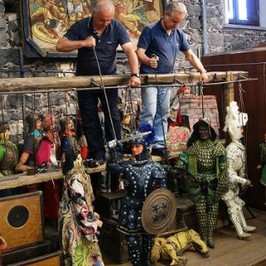 Piccolo Teatro Dei Pupi in Siracusa, Sicily Teatro dei Pupi Fratelli Napoli --Jerry Finzi If you enjoyed this post, please share it all over the World Wide Web and other planets too. Grazie. The Trompia Valley is one of three main valleys in the province of Brescia in the Lombardy region with the Mella River winding through the territory for more than 20 miles. The presence of a large amount of raw materials, such as iron, made mining such a large part of this region's industry and success ever since Roman times... in fact, the Val Trompia was a center for weapons production throughout history.
The valley lies at the foot of the Brescia Alps and extends from the first mountain peaks to the north, to the lands of the Po Valley to the south. The valley can be explored along 70 miles of roads and hiking trails. The Valtrompia is a land rich in traditions, hunting, myths, legends and folk tales. There are also many sagre, fairs and festivals which take place throughout the year showcasing the most typical dishes of the local cuisine. It's well worth a visit for Voyagers wishing to discover the beauty and culture of the Italian Alps. --Jerry Finzi If you enjoyed this post,please share it... grazie! 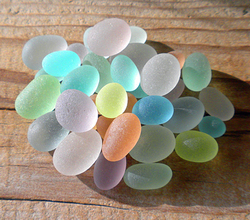 In the summer when I was a kid, our family would head to the Jersey "Shore" for a week to enjoy the sand and surf of the Atlantic. One of my favorite things back then was finding sea glass--shards of broken bottles and such that had been tossed into the ocean as garbage. Time and waves and grinding sand would smooth the pieces into colored gems in all colors of the rainbow. They were smooth, yet sandy to the touch. The shapes often looked like faces or an animal shape, and if I found a cobalt blue one it would become my new lucky piece to be carried daily in my dungaree pocket. In Italy, you can also find pebble beaches. For instance, near the famous Murano glassworks in the Venice lagoon, there are places that were used to dispose of broken glass for hundreds of years. Divers bring up buckets of the stuff and sell the gems to jewelry designers. You can walk the shores around Murano, or even go as far as the Lido beach at low tide and see what colorful treasures you can find. You can also try your luck in Scalea, a pebbled beach in Calabria or in Positano on the Amalfi Coast. Some sea glass hunters had luck on the coastline of Capri, the rugged beaches of Cinque Terre and even the Gargano Peninsula north of Bari. And here's another idea... If you are ever in Vietri sul Mare near Salerno on the Amalfi Coast, try beach-combing in the area. Vietri has been a center of ceramic production for generations. The broken pieces were tossed into the sea, which has created soft-edged shards of colorful pottery to be found on the beaches. If you're lucky and find a lot, perhaps you can use them to create your own ceramics treasure. --Jerry Finzi If you enjoyed this post, please SHARE it and LIKE it. Grazie! Off the Tourist Path: Castello Incantato - the Enchanted Castle and Stone Heads of a Madman9/24/2015 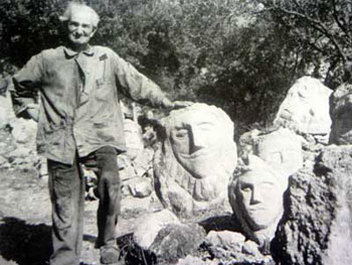 Filippo Bentivegna Filippo Bentivegna Deep in the southern part of the island of Sicily, near the town of Sciacca is a sad, yet wonderful story of a man, his madness and the amazing fruit born of his troubled mind. With no artistic training, this disturbed shell of a man carved thousands of stone sculptures at Castello Incanto, the "Enchanted Castle" at his farm. Filippo Bentivegna_ was born in Sciacca on May 3, 1888--his father was a fisherman, his mother a housewife. In 1913 he emigrated to the U.S., following two older brothers and a sister, as many southern Italians were doing in the early 20th century. In America he suffered a serious blow on the head, which brought on amnesia and the inability to earn a living. Some claimed that he had been assaulted and sustained brain damage while others said a woman broke his heart which caused him to injure himself. He was subsequently considered unproductive and declared unfit for work and was repatriated to Italy in 1919. Things went even worse for him after his return to Italy. It was determined that the time he spent in America was essentially an act of desertion from participation in WW I. He discovered that while he was gone, a judgement was handed down for desertion with a three year prison term--this was his new burden. But before he could be put in jail, he needed to undergo a psychiatric evaluation--which he failed. Not considered a threat to the public, he wasn't jailed, but some would say was thrown into a much darker place--his clouded and troubled mind. 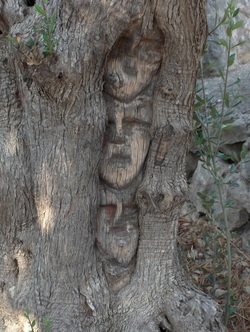 With the little money he had, he bought a small plot of land on the outskirts of Sciacca. Living alone, he built a small hut and began to develop the rocky land... he began to carve heads from the outcroppings. In his mind's eye, he was carving the likenesses of people he had met in real life, both in American and Italy. He sculpted for over 35 years until there were more than 1000 heads. His work was never recognized while he was alive, and his eccentric behavior earned him the title of village madman. The villagers mocked him as Teste Filippo (Phillip's Head) or Filippo il Pazzo (Phillip the Crazy) for his bizarre attitude--he demanded he be addressed as Excellency because he was the king of his little domain. After his death in 1967 at age 79, his family turned the site into a tourist attraction and garden. People visit the site to admire his heads, the gardens and a series of frescoes Bentivegna painted inside his little house. The place was dubbed the Enchanted Castle. It is an amazing place to see these primitive works of art and try to understand the visions in the mind that created them. Visit the Castello Incantato on Facebook. --Jerry Finzi If you enjoyed this post, please share the link on your favorite social media site. Grazie. 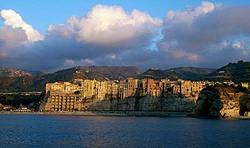 There are many places in Italy where the sights you see with your own two eyes seem unbelievable... you can hardly trust what you are seeing. One of them is in Tropea, with it's Citadel on the Rock, which can easily be considered one of the most beautiful sights anywhere in the world. The coastline and the villages here are well worth exploring. Tropea is a seaside resort with impressive scenery in the region of Calabria, in the south of Italy in the Vibo Velentia province. When viewed on a map of Italy, Vibo Valentia looks like a little frog sitting on top of the Boot's instep. Calabria itself can be considered the foot of Italy. The mountains here are nearly impossible to cultivate but there is a gorgeous coastline with villages perched atop rugged high cliffs. No part of the region is more than 30 miles from the coast--one on the Tyrrhenian Sea, the other on the Ionian Sea. Tropea is perched on a cliff above the Tyrrhenian Sea. 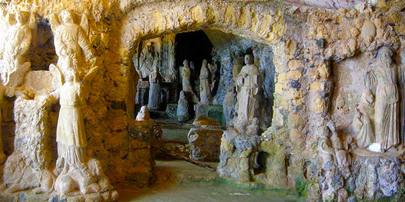 Calabria has often been considered poor by most Italians but in fact is very rich in both beauty and has a varied and interesting history. This stretch of coastline on the Tyrrhenian Sea is called the Costa degli Dei (Coast of the Gods). The Ancient Greeks originally named this area, Entoria Tellus (Land of Wine). Being Part of Magna Graecia, the area is rich in Greek legends and mythology. Tropea's name comes from the Greek name Tropheum, referring to it being the trophy city of Hercules after he and Ulysses saved the town from two giants. It has become one of the finest summer holiday destinations--for Italians. Foreign Voyagers hardly know about the place. Tropea's historic centre is perched high above the sea on top of dramatic cliffs. It would make a great hub for a longer stay in Southern Italy to explore Calabria, Sicily and perhaps even the Salento. The local rail line and ferries afford lots of options for travel, cutting down the need to drive. You won't find much English spoken here, but you will find some German vacationers and lots of Italians, especially during Ferragosto, enjoying their month long vacation at the seaside. In May, June and September, Tropea is cheaper and less crowded with weather still warm and sunny. Anytime of day you will see visitors and locals alike taking a passeggiata down Corso Vittorio Emanuele, to shop, get a snack or meal, sit and people watch and catch the views of the sea at the Corso's end leaning on the railing right at the edge of the cliff. This view rivals the views from Sorrento with its views of Mount Vesuvius... from Tropea you can even catch a glimpse of the active Stromboli volcanic island! Tropea has a laid back, rustic, timeless charm that is missing in Northern towns. Of course, the best thing Tropea offers besides its white beaches is its citadel on the rock. On the rock outcrop jutting into the sea opposite the historic center is Santa Maria dell'Isola, an active monastery with its gardens. Side trips can easily be taken to Pizzo Calabro and Capo Vaticano, the two main towns in Vibo Valentia. In Pizzo you will find yet another village on cliffs over the sea, but you should visit its Church of Piedigrotta, a grotto chapel cared our of stone with amazing sculptures. You will find an amazing peaceful feeling in this cave with a lagoon nearby to refresh yourself in. Capo Vaticano has the most rugged cliffs imaginable with the whitest beaches tucked in between. Snorkeling is heavenly here, with waters so clear it's like diving in air. You can also take a ferry over to the village of Stromboli, on the volcanic island of the same name. It's most recent major eruption was in April of 2009. When you walk the streets of the white washed houses in Stromboli village, you will feel like you're in Greece. All in all, you'll find Tropea and the Coast of the Gods to be a great alternate to Cinque Terra, the Amalfi Coast or the Italian Riviera. Depending on the time of year you visit, you might have the place all to yourself--well, nearly so anyway. The beaches cannot be beat anywhere in Italy. The climate is wonderful. The food is amazing... and remember, you won't run into throngs of other tourists there. Just you and Italians.
Buon viaggio. --Jerry Finzi If you enjoyed this post, please send your friends on a Voyage with us. Grazie! 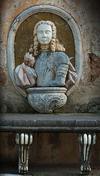 If you are ever in Palermo, you might want to take a ride out about 7 miles to the village of Bagheria, where you will find a Villa full on monsters--Villa Palagonia. This architectural gem, while rough at the edges, is full of eccentricity, oddities and hideous and grotesque sculptures that adorn the garden walls. In fact, this is a perfect choice for the modern Grand Voyage of Italy simply because it was also a popular stop for Voyagers taking their Grand Tour of Europe during the 18th and in the 19th centuries. 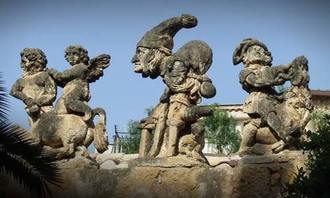 Built in 1715,Villa Palagonia became one of the most loved examples of the Sicilian Baroque style. However, it wasn't until a bit later that the villa became haunted by its monsters. The mentally unbalanced Prince of Palagonia, in 1749, ordered the gargoyles to be added atop the garden walls. Hunchbacks, soldiers doing battle (raping and pillaging), dragons, and various freaks in both human and animal form peer down at Voyagers here. One legend claims that most horrible faces resemble the many lovers of the prince’s wandering wife. 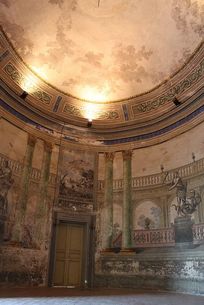 On the interior you will find a Hall of Mirrors (the ballroom) with many different kinds of birds and portraits of the Lords that the Prince associated with (er... the Lords, not the birds... although he was a bit flighty). The Villa has been privately owned by the same family from 1885 til the present day, and is partially open to the public. It has also be used in various movies over the years. Personally, I could easily picture a version of Beauty and the Beast here... this Villa is well suited to La Bete and La Belle... or perhaps Dracula would feel right at home here... --Jerry Finzi
If you enjoyed this post, please come back and visit again and again.... and tell your friends about us. Ciao! CIVITA DI BAGNOREGIO, Italy (NY Times)— Forgive Sandro Rocchi if he seems a smidgen satisfied as he enjoys a midday glass of red wine at his children’s restaurant and relishes the unlikely revival of this stunning hilltop village. He moved away in the 1970s for lack of prospects. Now there are shops, restaurants, boutique properties and gobs of tourists.
“The place has come back to life,” Mr. Rocchi said. There is a teensy problem, though. Civita di Bagnoregio is slowly, steadily collapsing, and it has been for centuries. Landslides have incrementally eroded the sheer cliffs, at one point slicing off the ancient stone residence of the village’s most famous native, Giovanni di Fidanza, the medieval theologian canonized as St. Bonaventure. For years, this losing war of geological attrition was not such a big deal because barely anyone lived in Civita, and not too many people visited. The year-round population is still tiny — maybe six people, maybe eight — but Civita, 75 miles north of Rome in central Italy, is now a tourism dynamo, with more than 500,000 visitors expected this year. It is a candidate to become a Unesco World Heritage site. It is the centerpiece of a regional tourism campaign and is featured on city buses in Rome. It is, everyone agrees, a marvel. Photo Tourists played on the columns outside the San Donato Church in Civita. More than 500,000 visitors are expected this year. Credit Nadia Shira Cohen for The New York Times And it is still collapsing, if very slowly. In May, a hillside gave way near the elevated one-lane road that leads to the footbridge that leads to the village. The road remains stable as crews are working on the hillsides; tourists have not seemed to notice. A local geologist estimated that Civita had suffered about 10 landslides during the past year, some of them small, others more damaging. “Rain is the main problem,” said the geologist, Giovanni Maria Di Buduo, who oversees a local museum dedicated to the geology of Civita and the surrounding region. “Rain gets into the fractures of the volcanic rock and creates alterations. In the last five centuries, we’ve seen a reduction of the cliff by about 20 percent due to landslides.” Given the newfound tourist trade, as well as the historical and cultural significance of a village first built by the ancient Etruscans, the Lazio regional government is moving to respond. One possibility is to push for a national law granting special status and funding to Civita. Also, Lazio officials say they will draft a 10-year plan for a holistic approach to reinforcing and protecting the village, after more ad hoc efforts in the past.... (Read the entire article here) |
Categories
All
Archive
June 2024
|


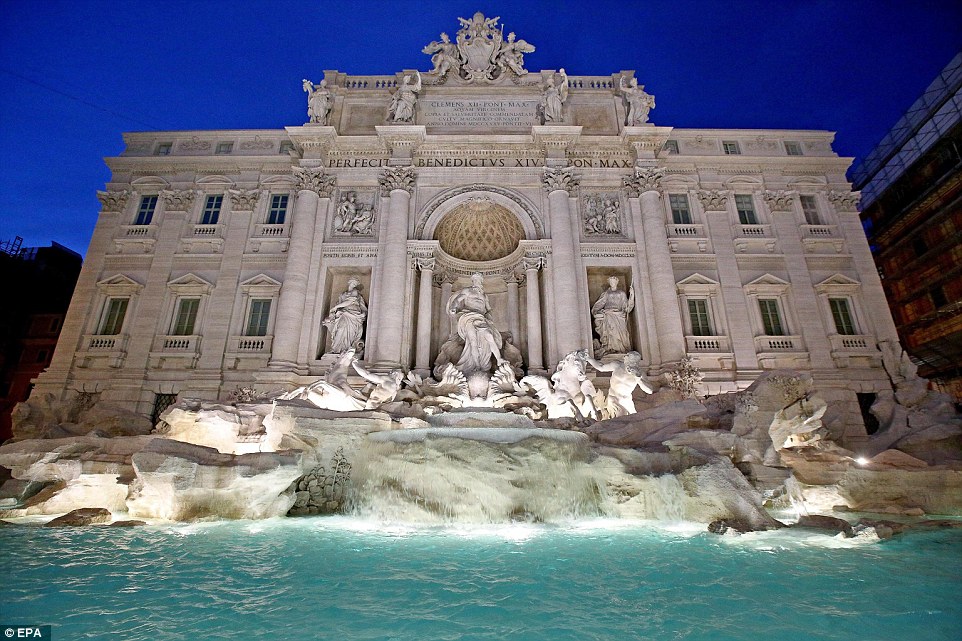
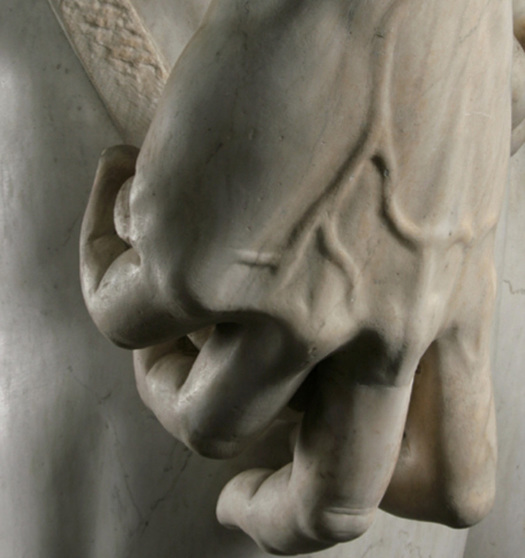
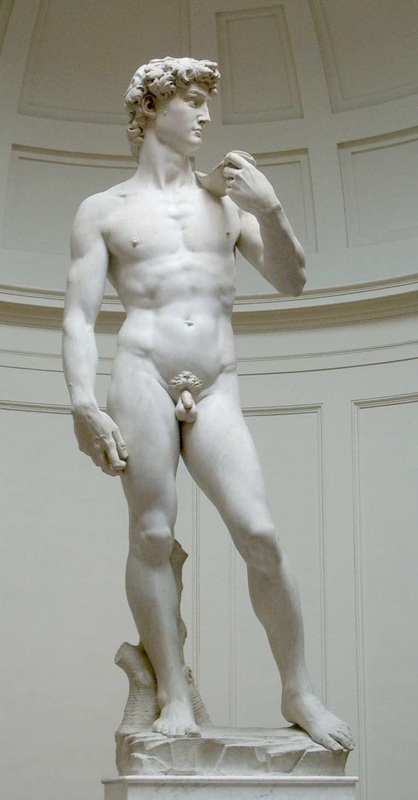
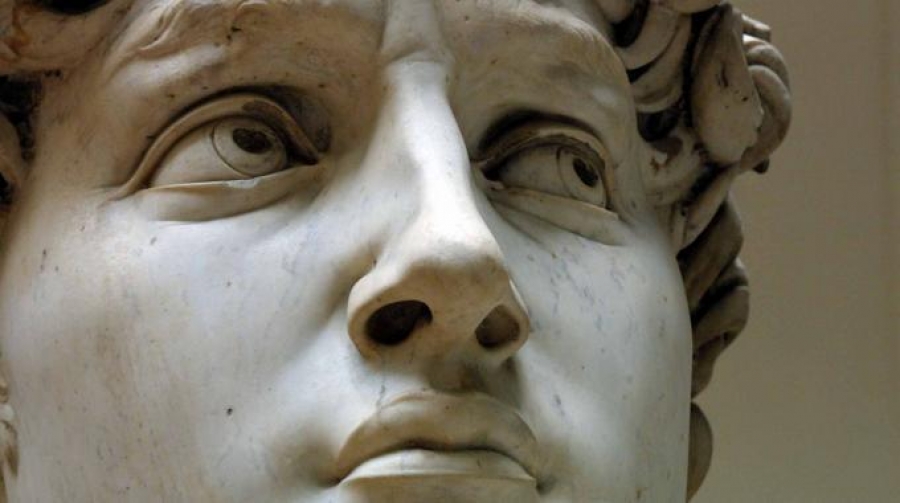
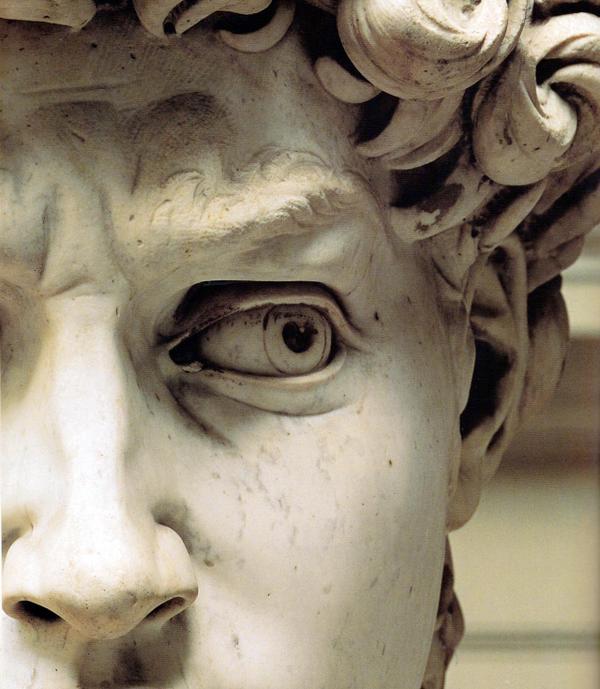
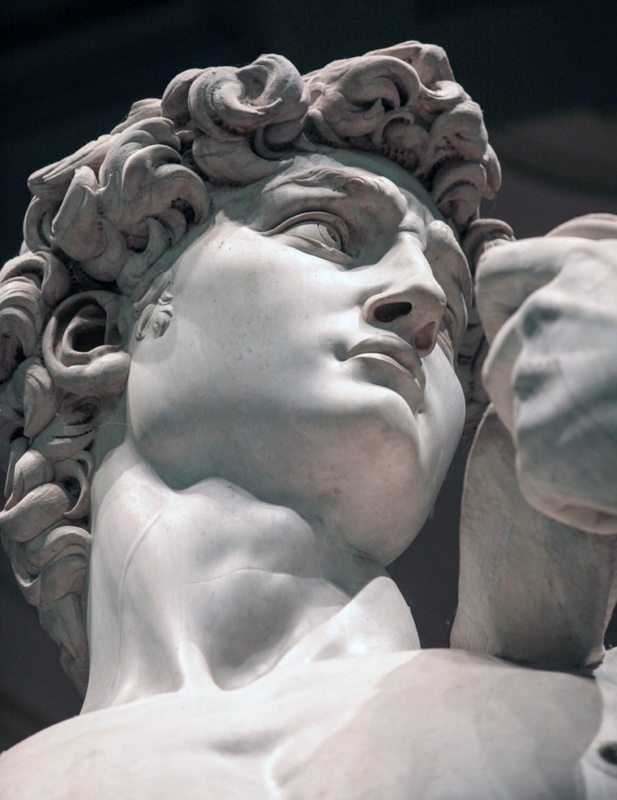
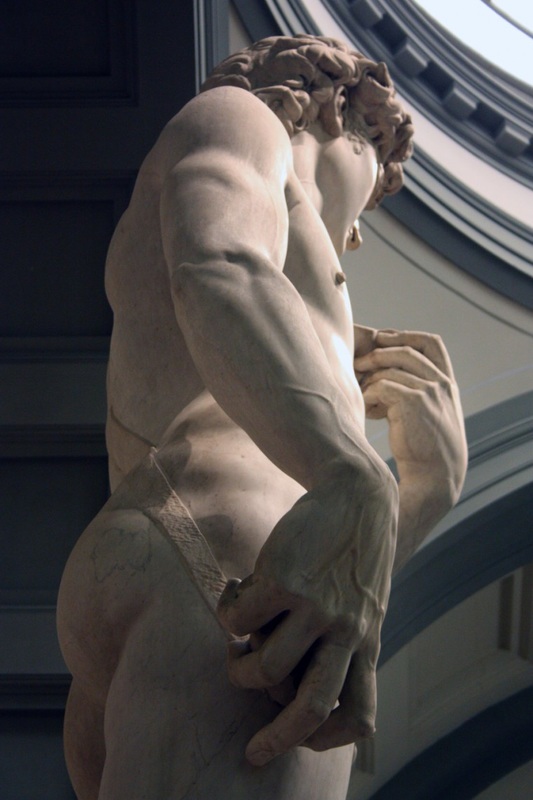
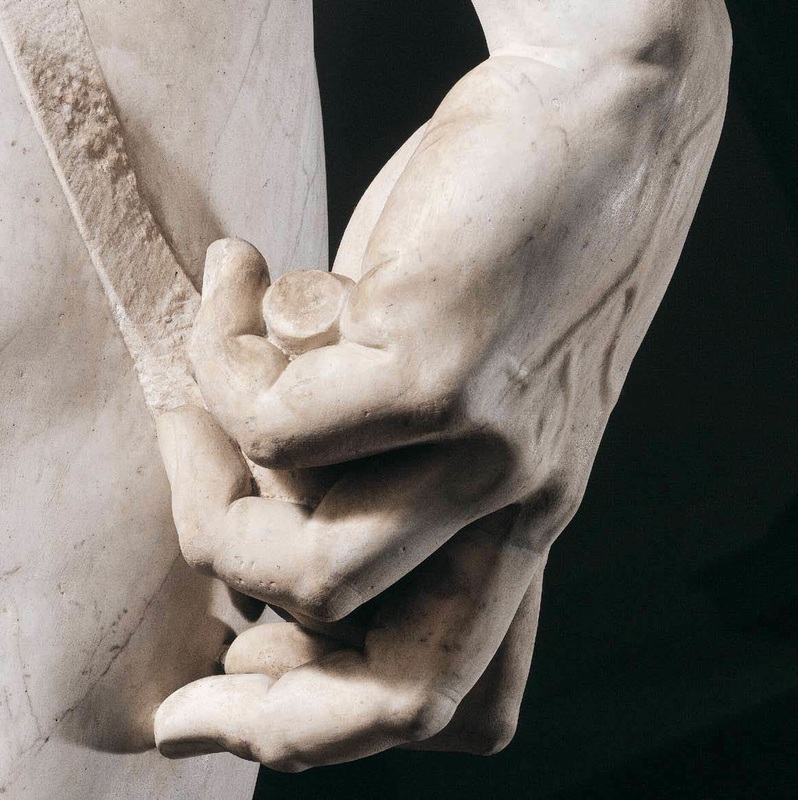
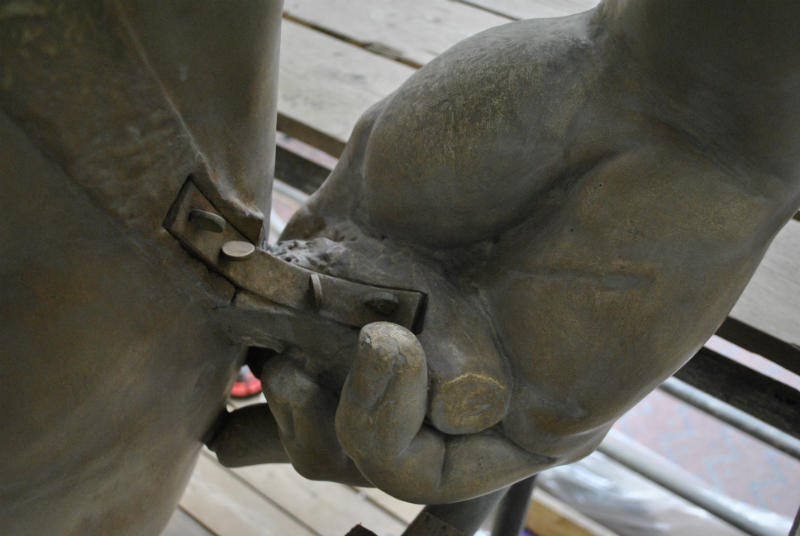
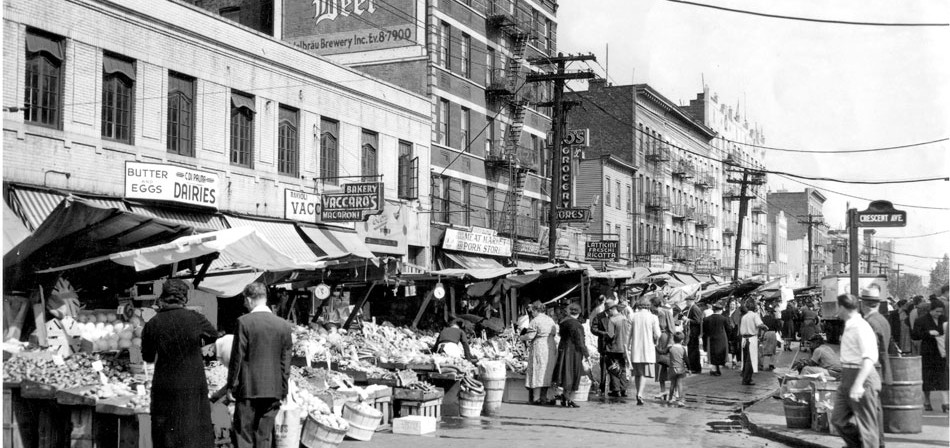

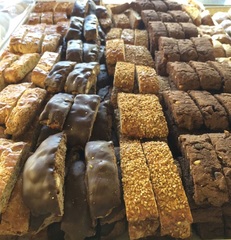
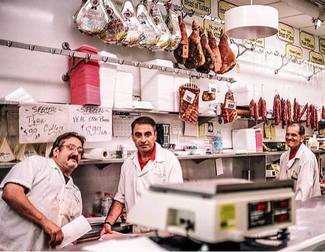
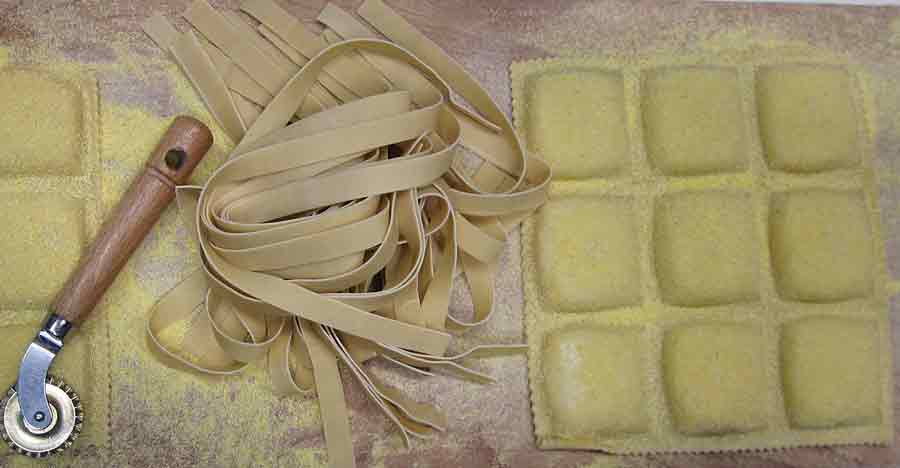
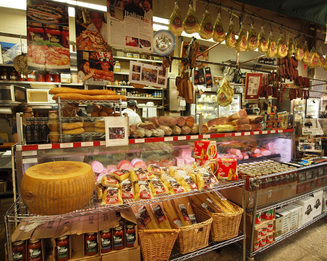
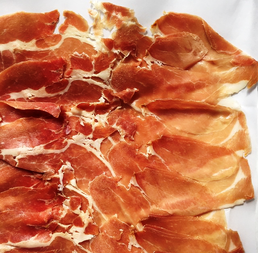
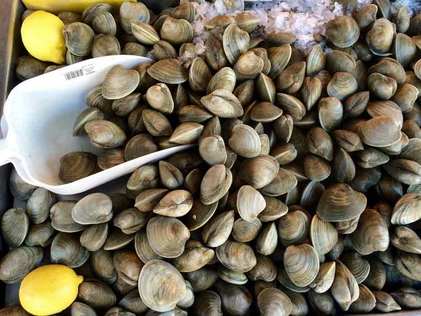



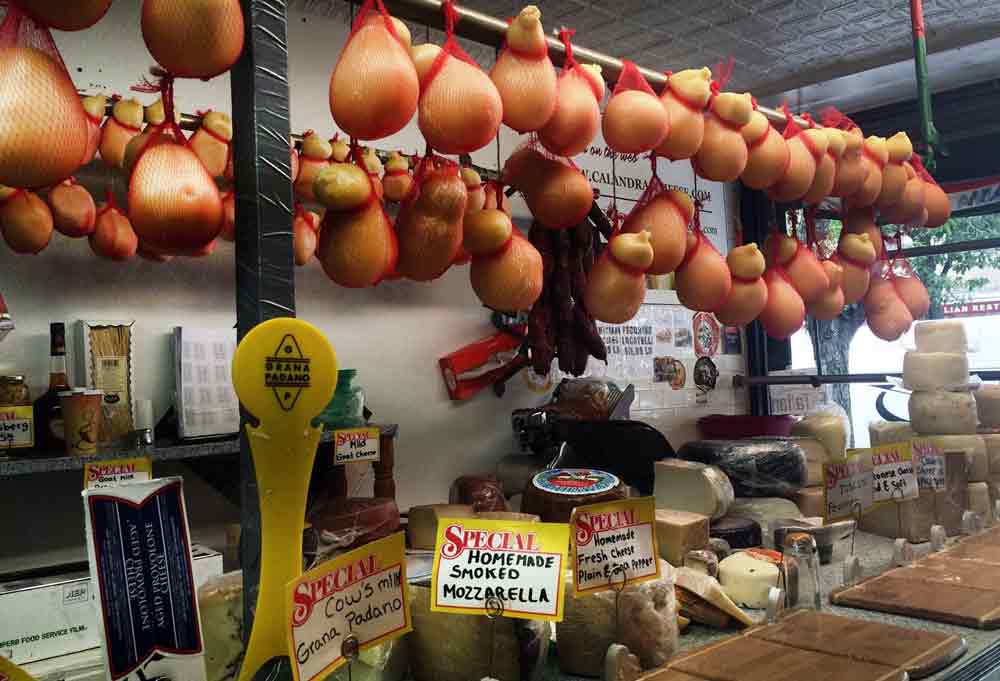
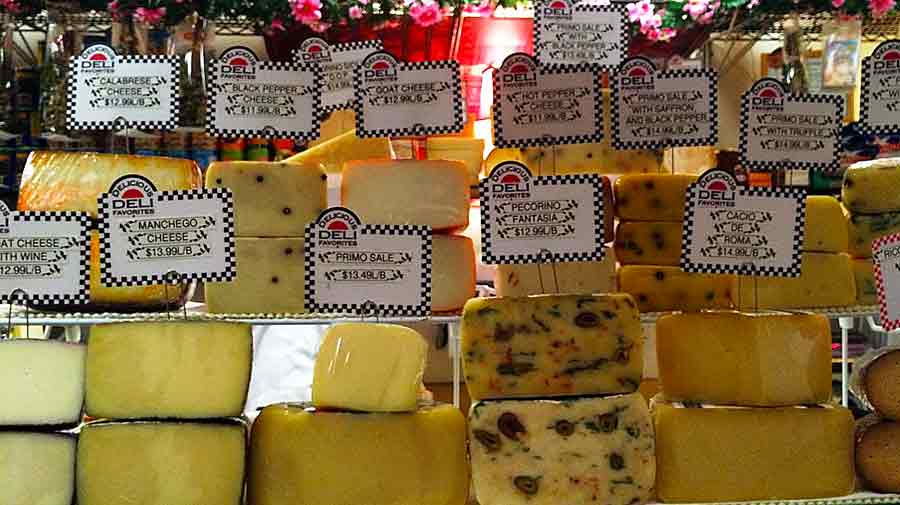



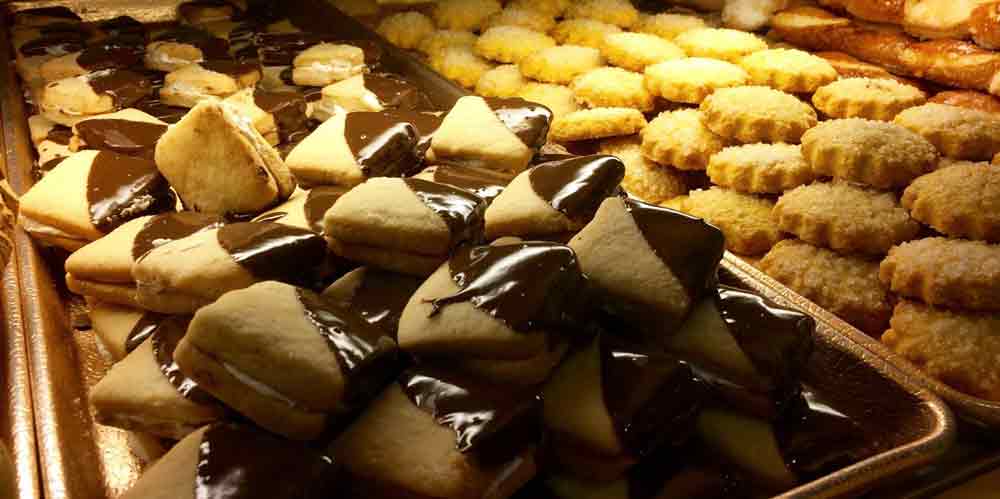
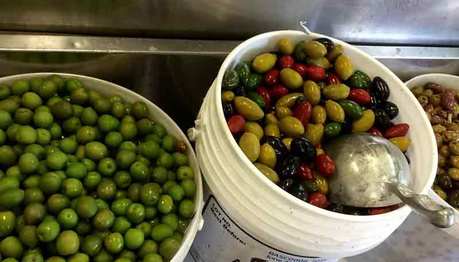

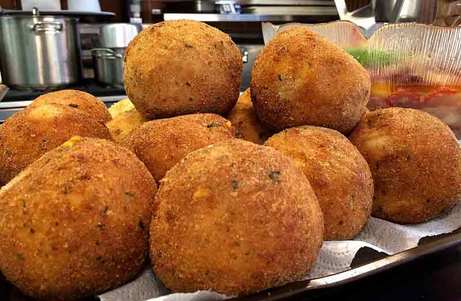
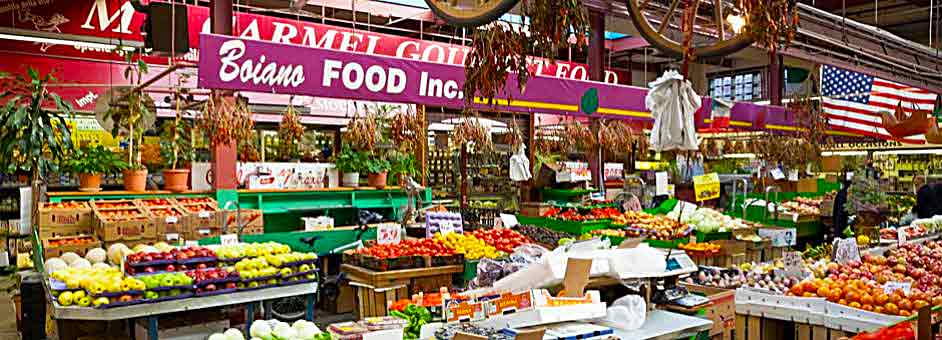
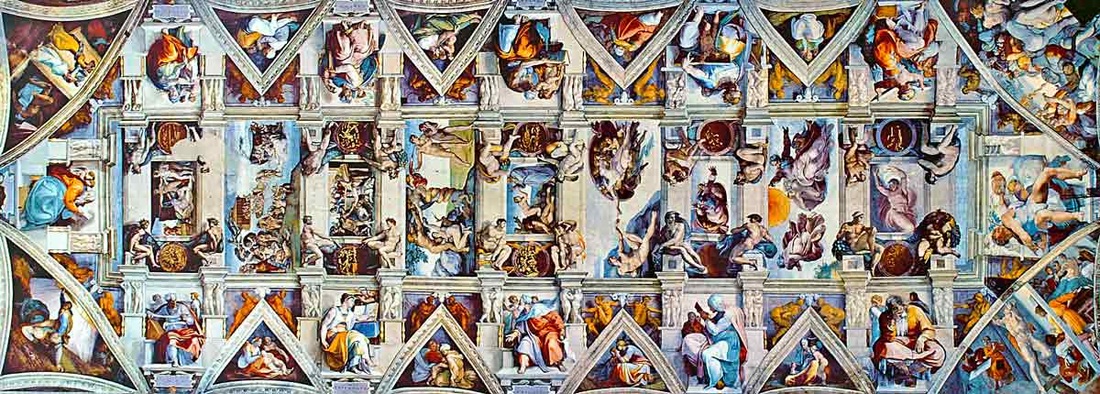
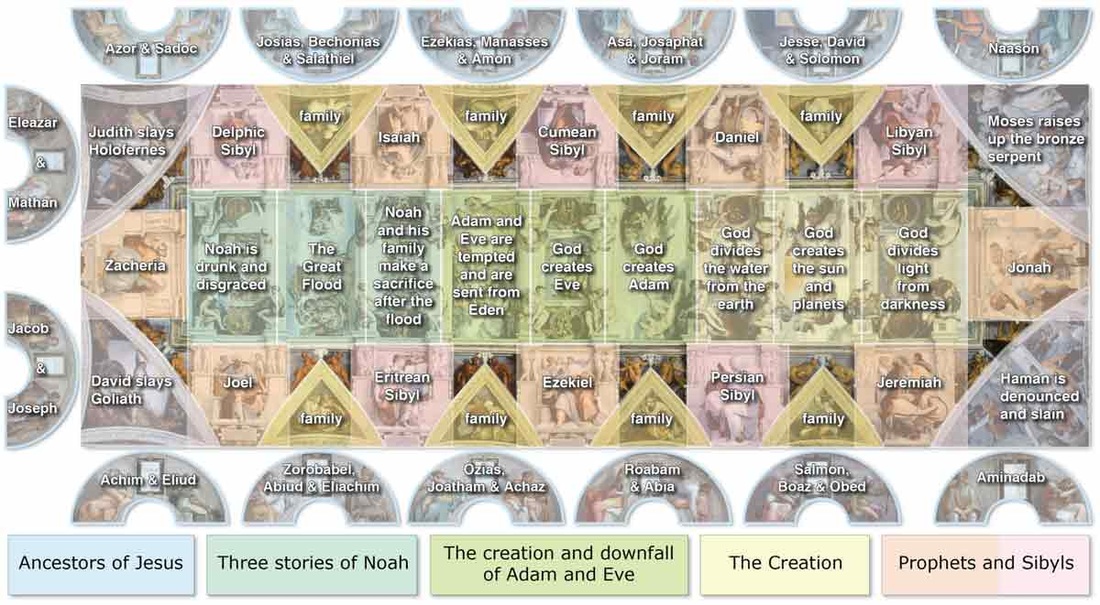
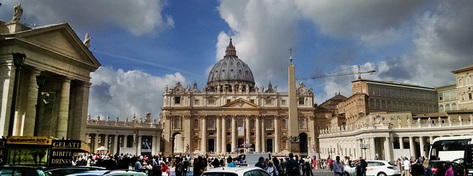
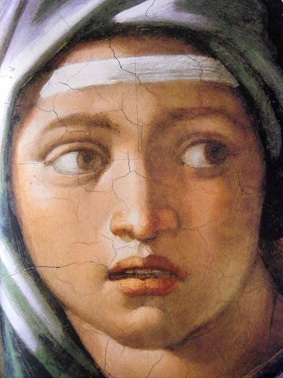
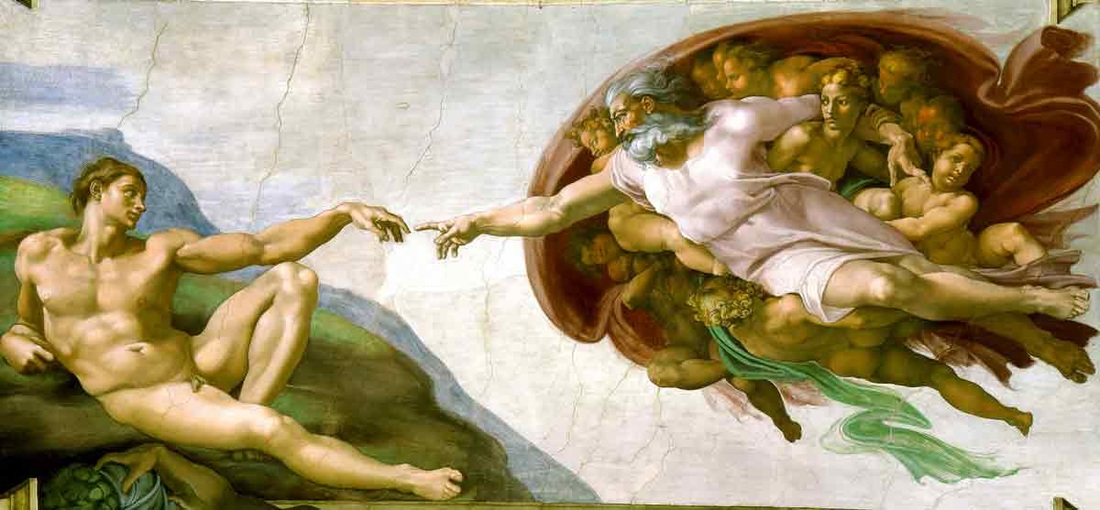
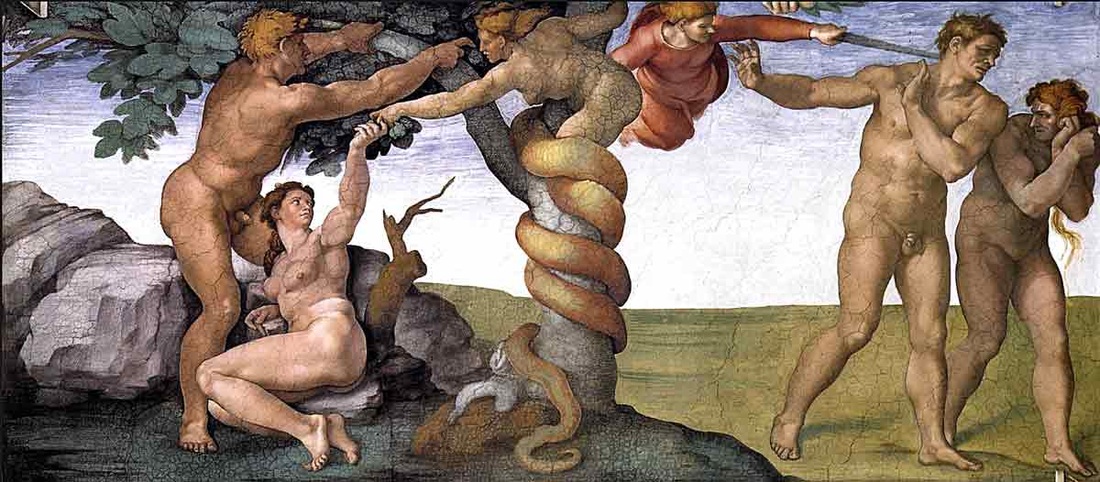
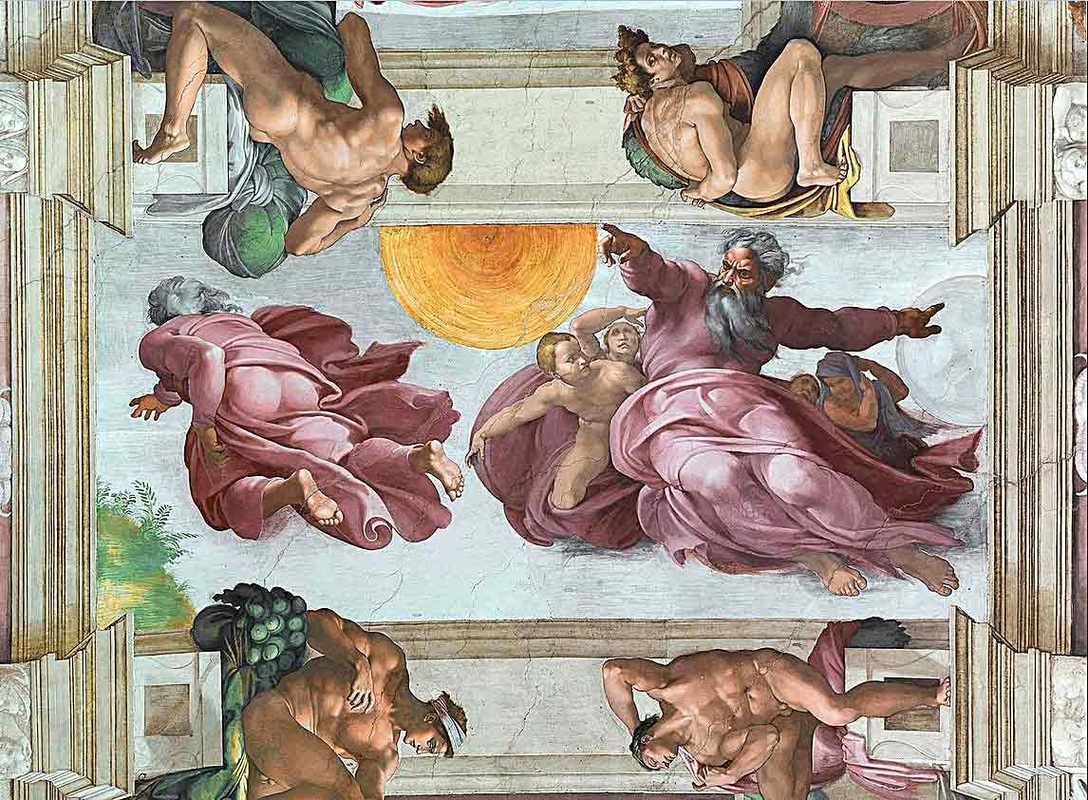
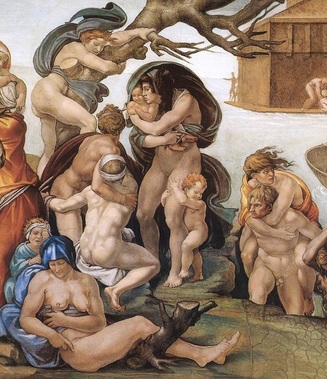
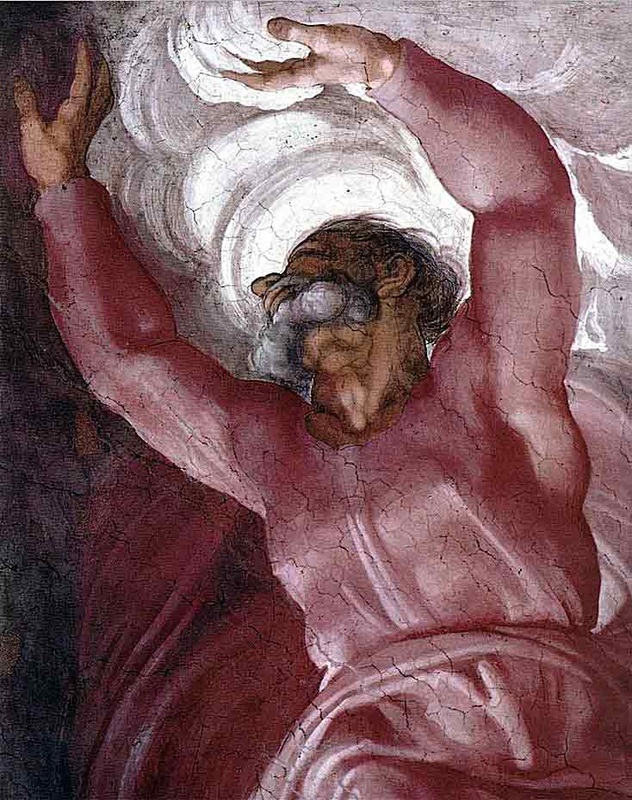
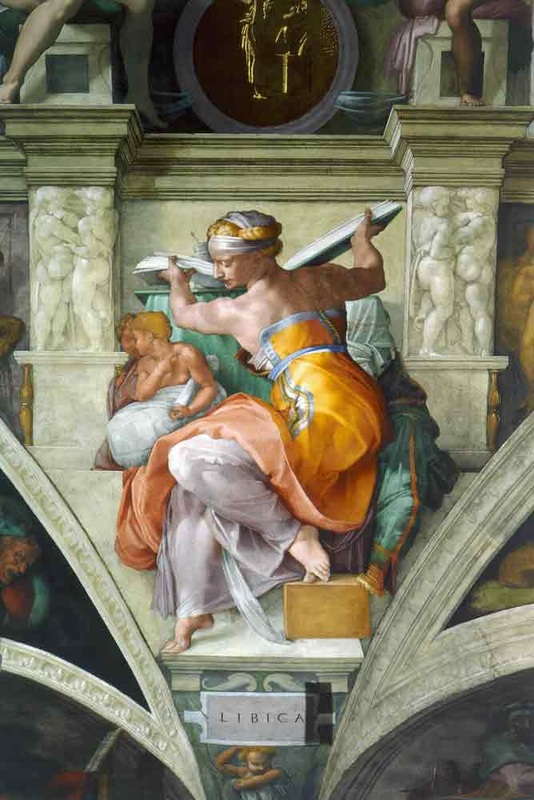
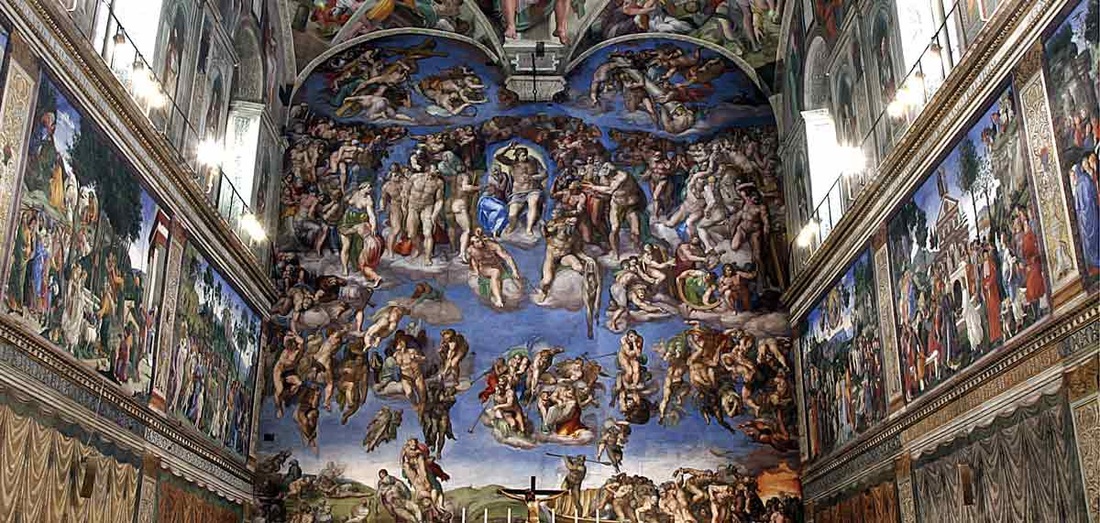

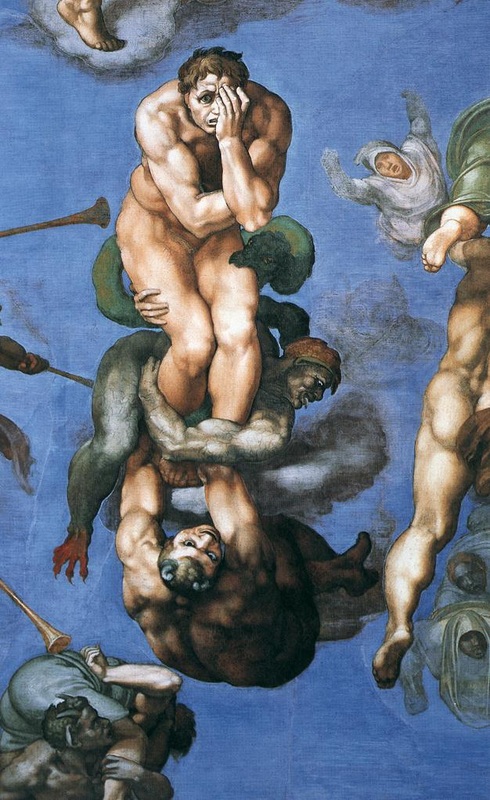
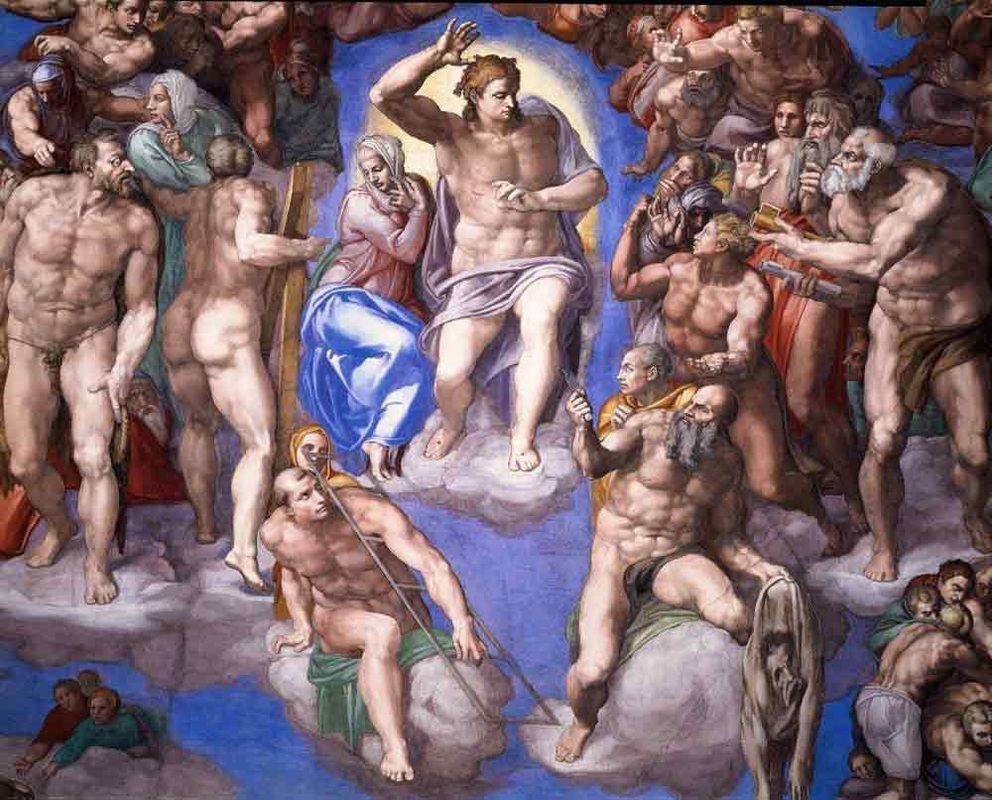
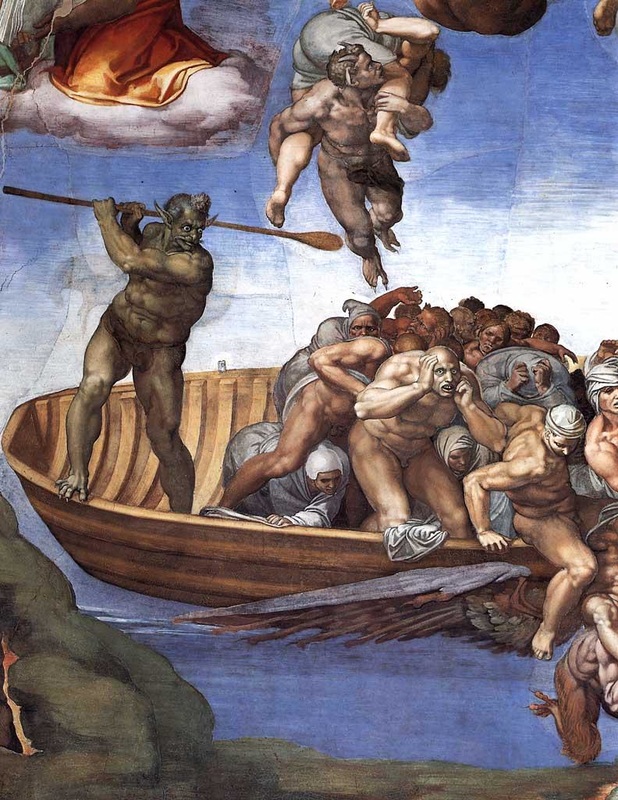
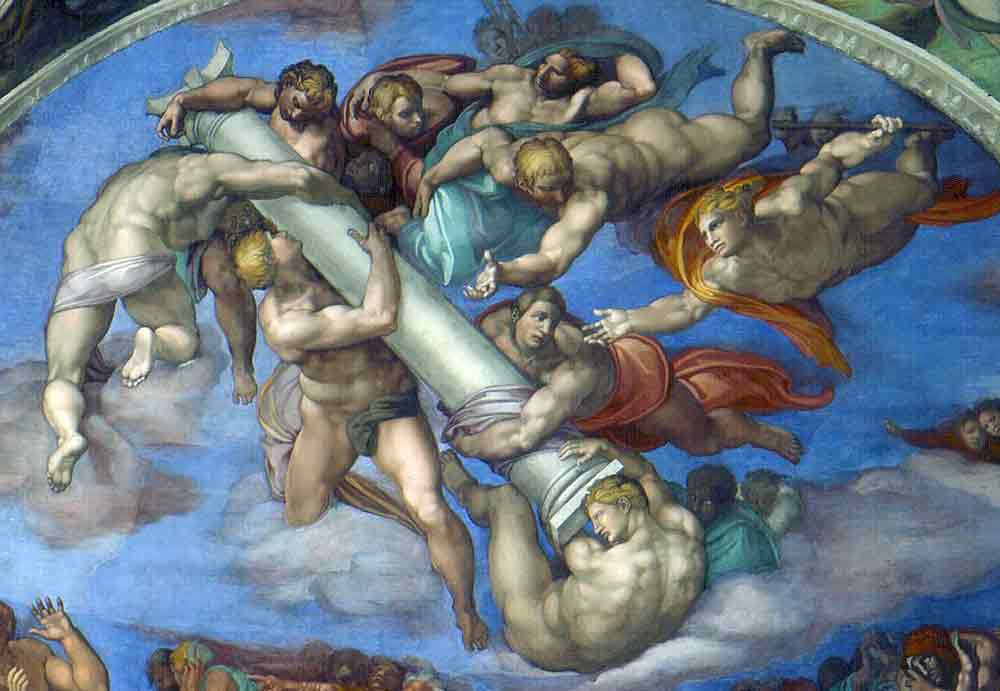
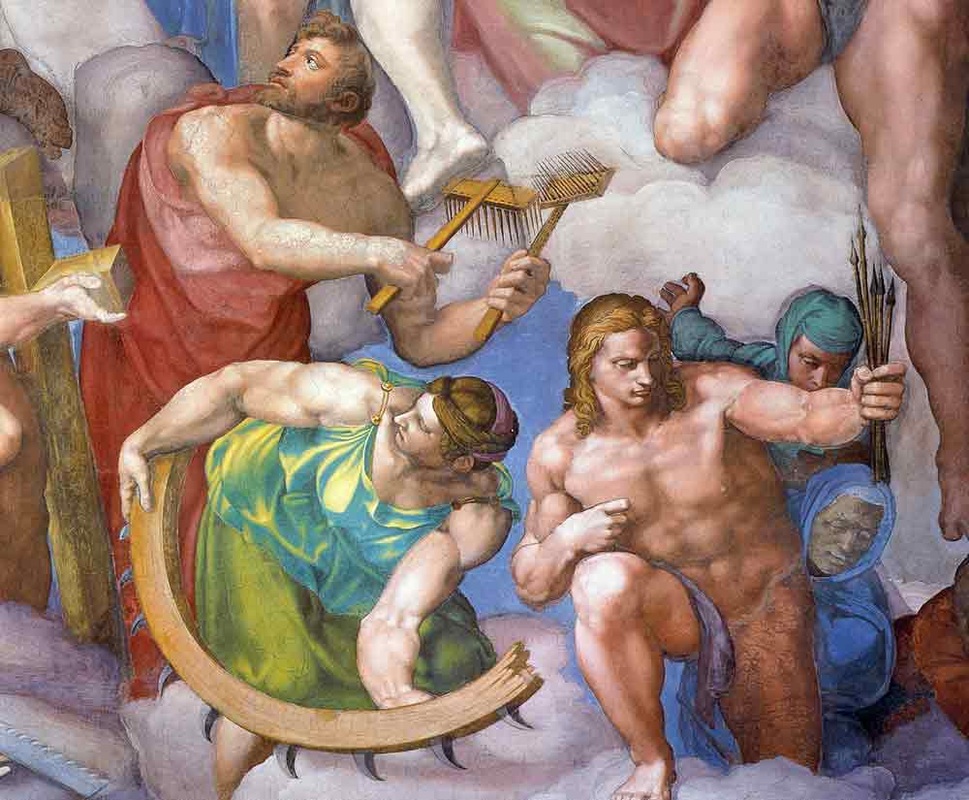
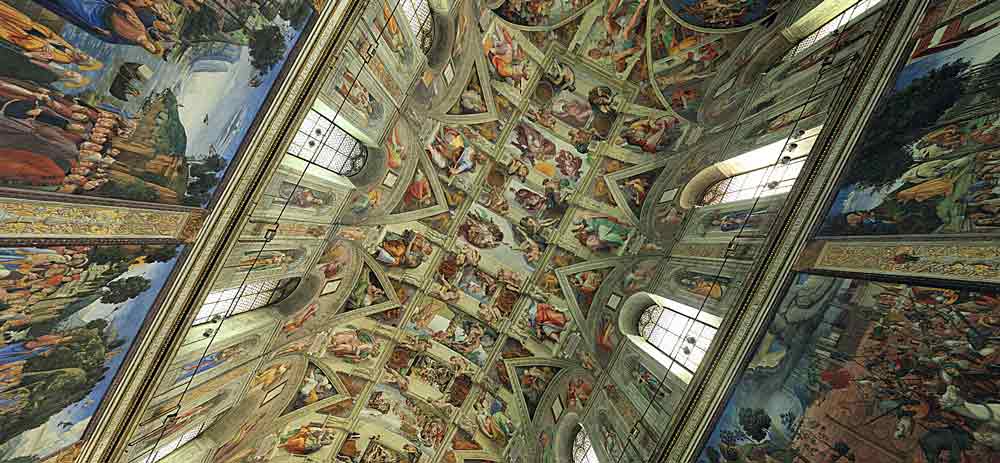
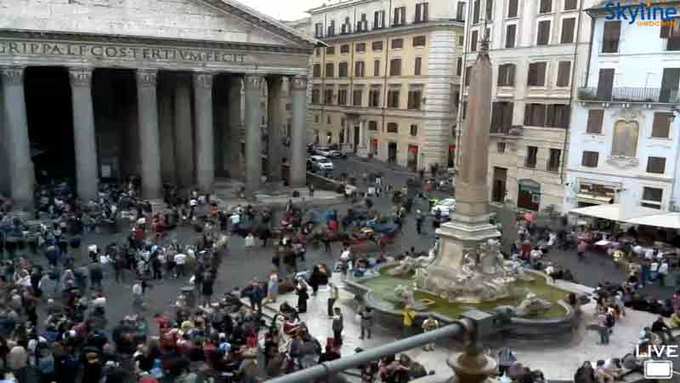

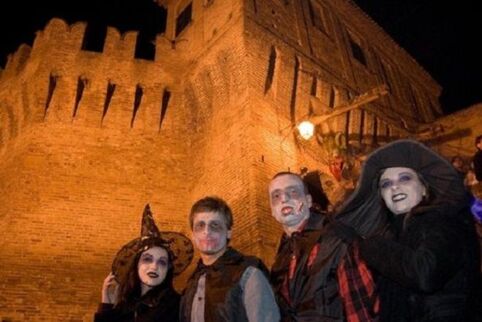
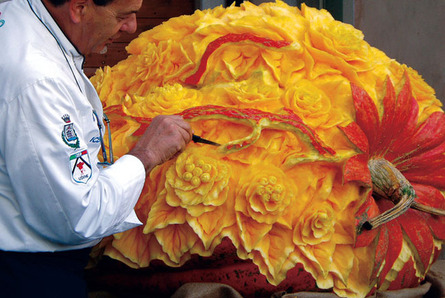
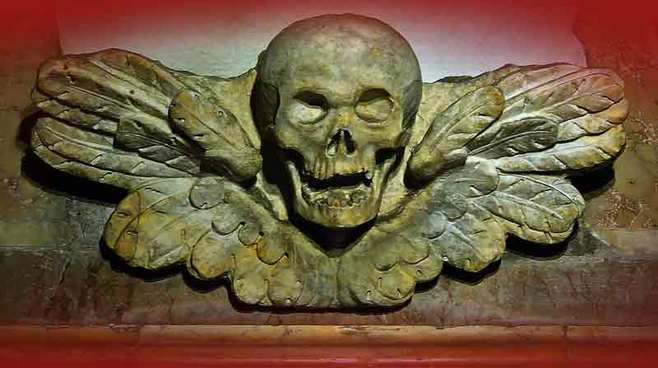
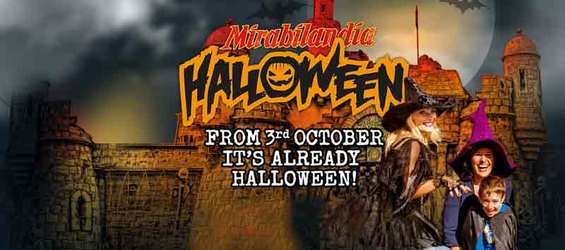
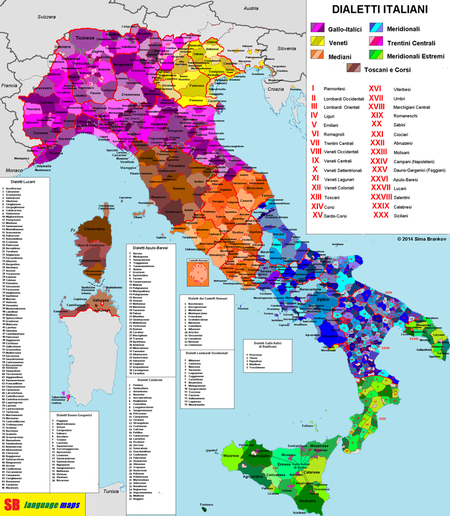
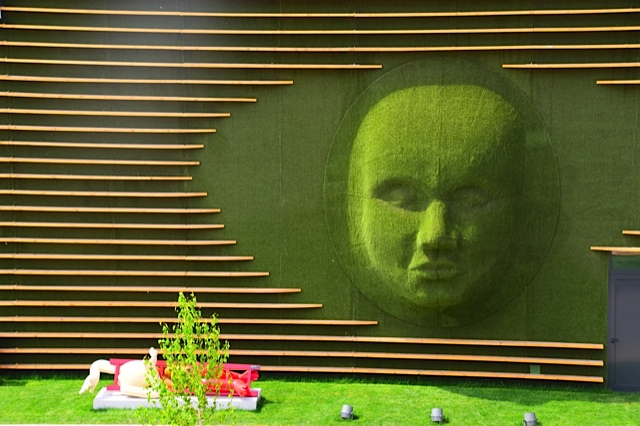

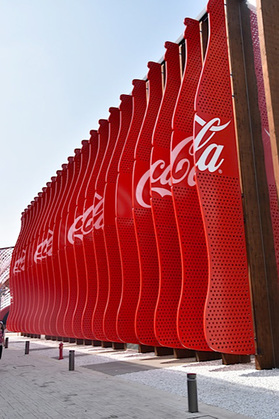


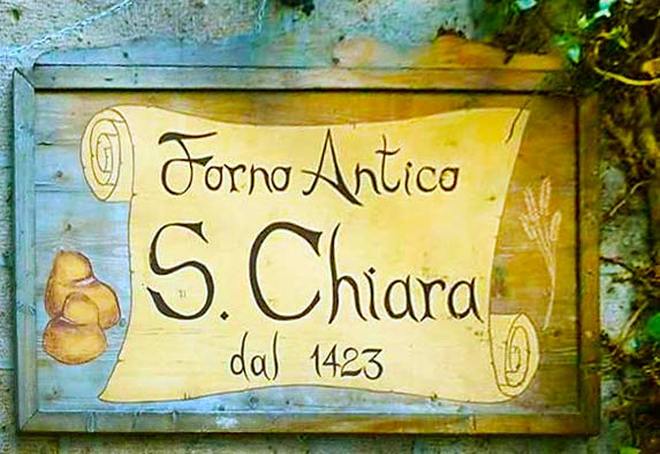
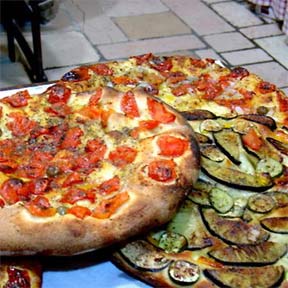
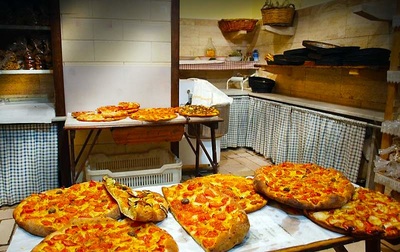
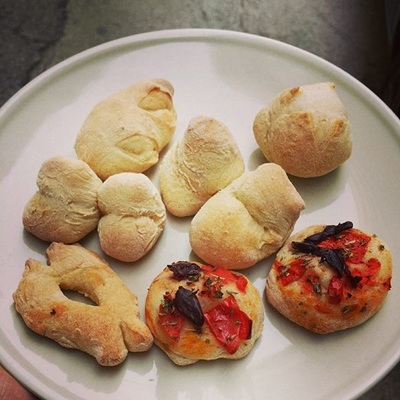
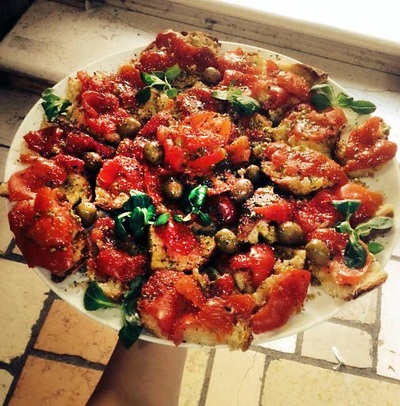
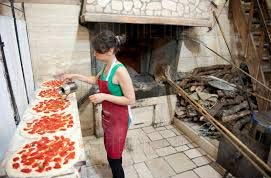
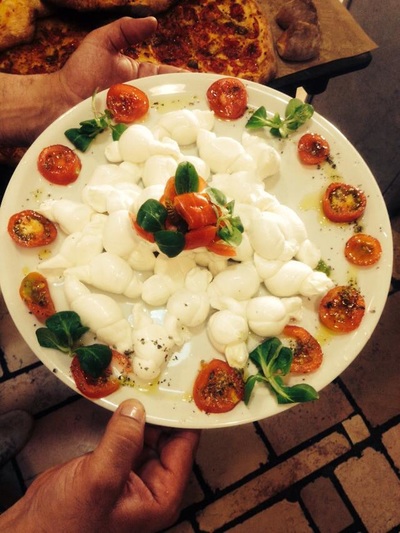
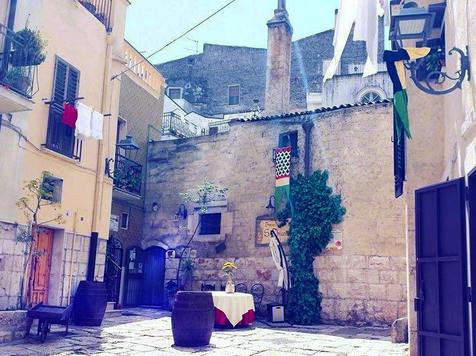
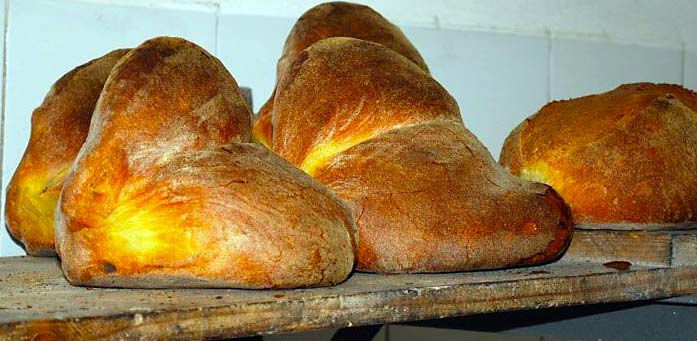
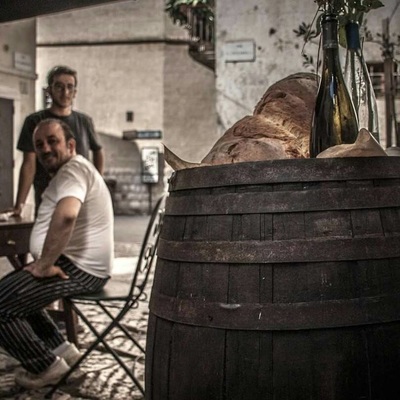
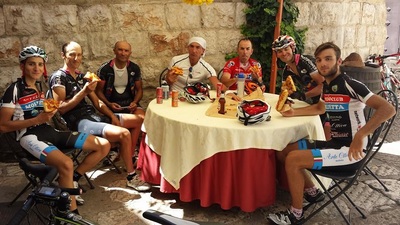
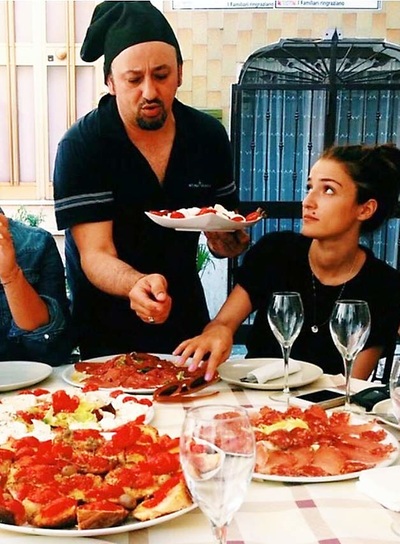
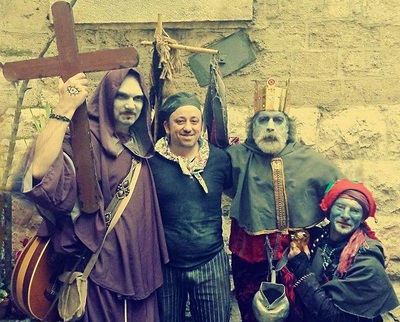
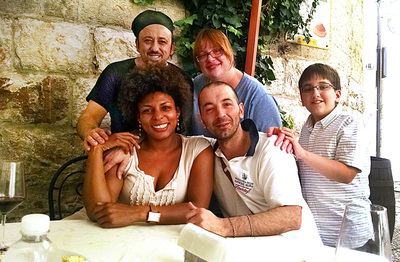
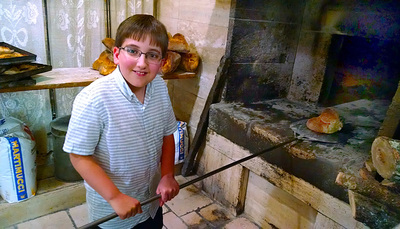
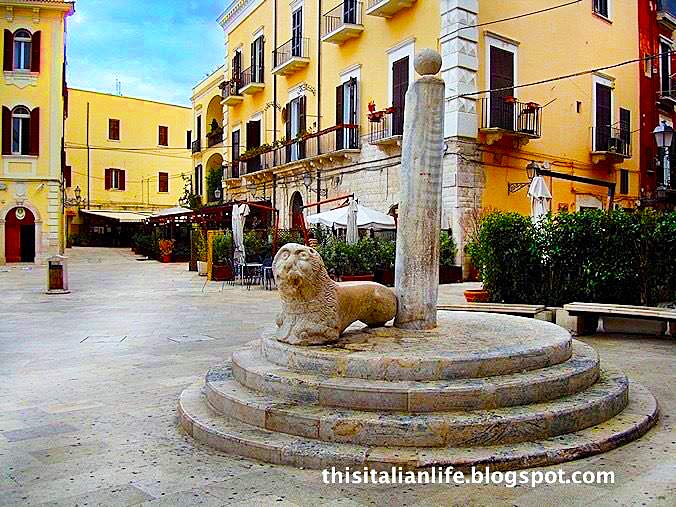
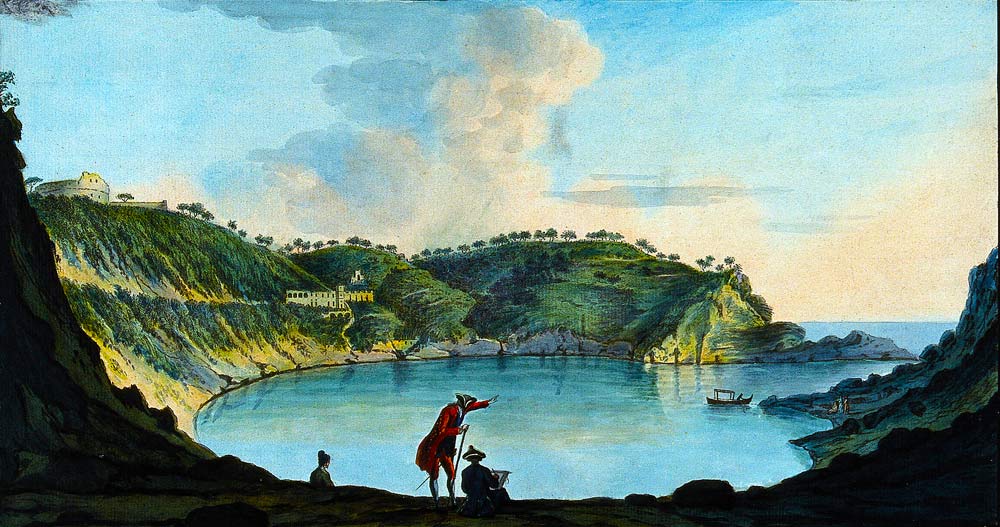
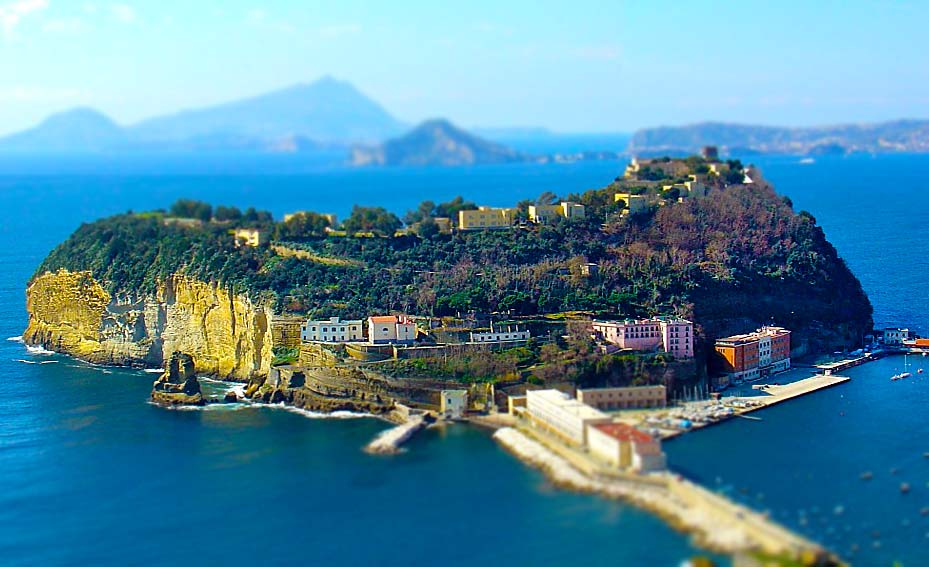
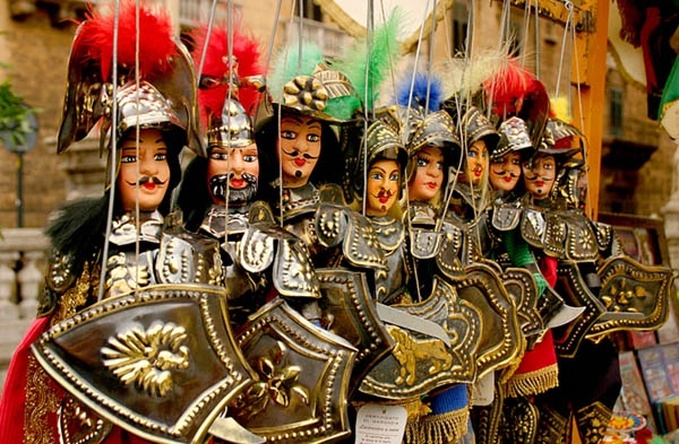
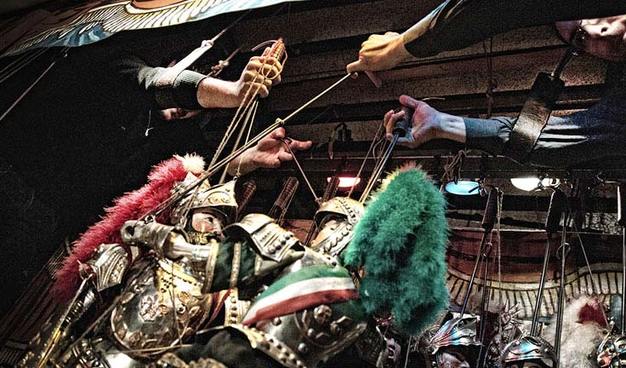
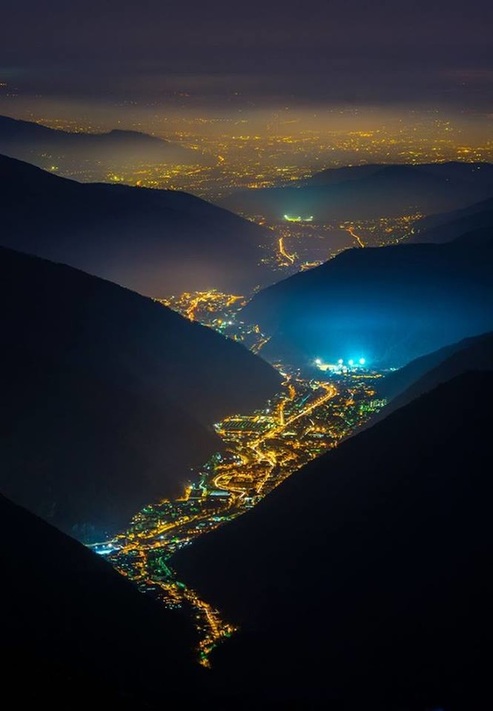

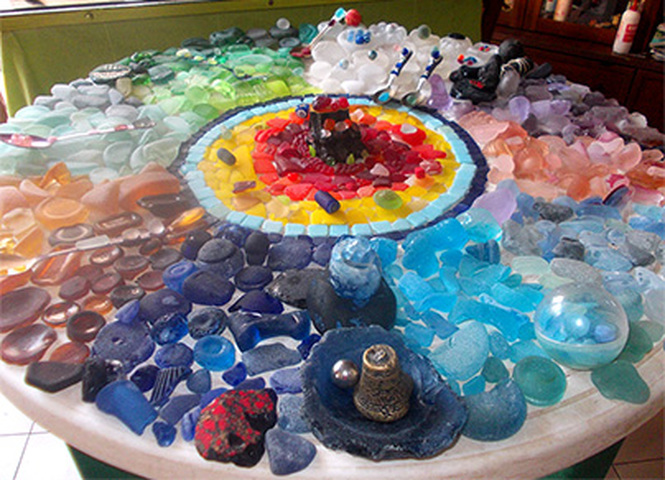
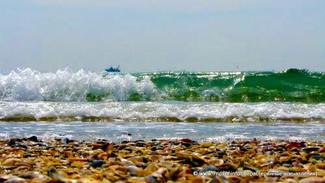
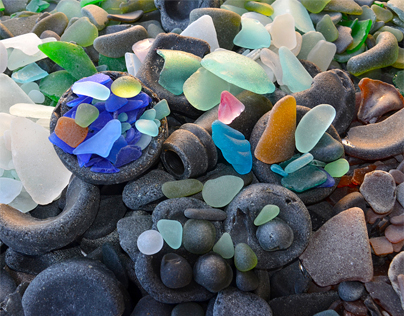
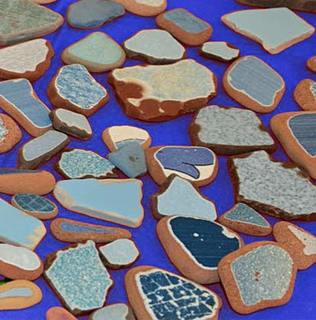
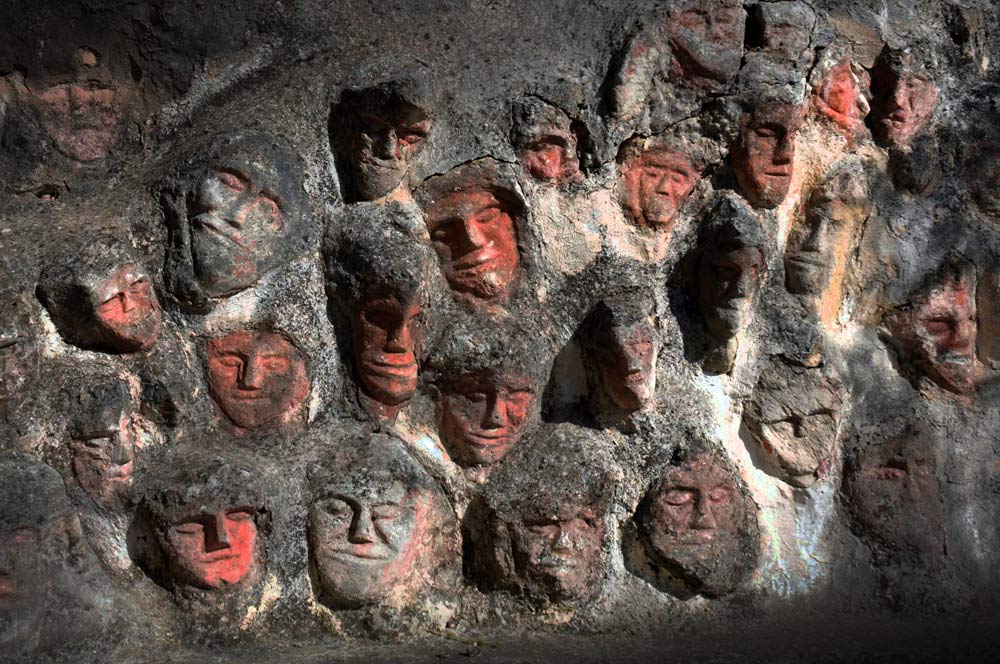
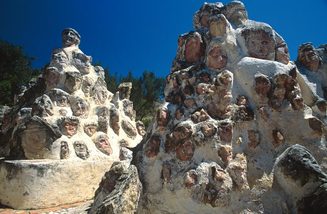
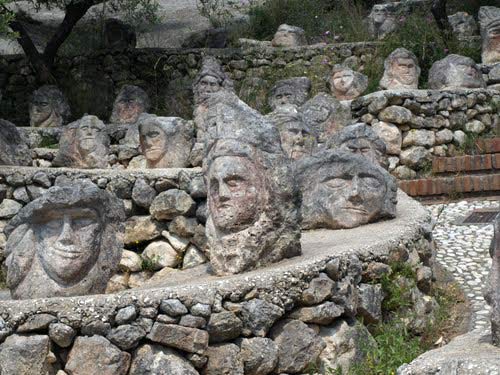
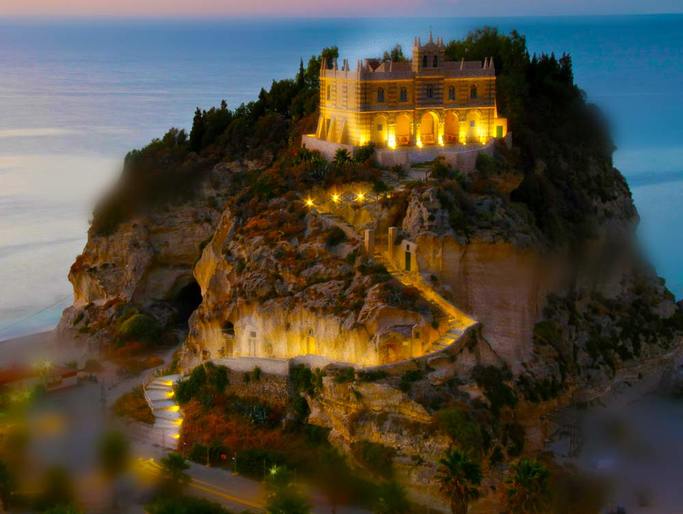
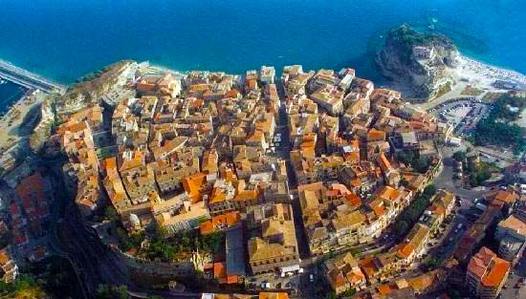
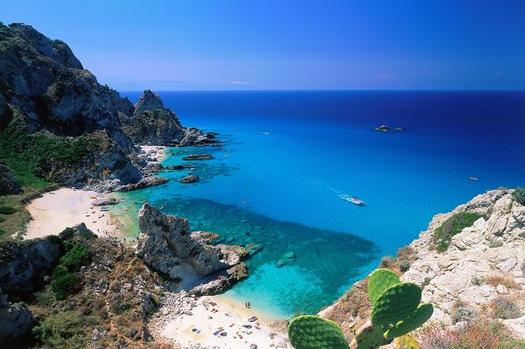
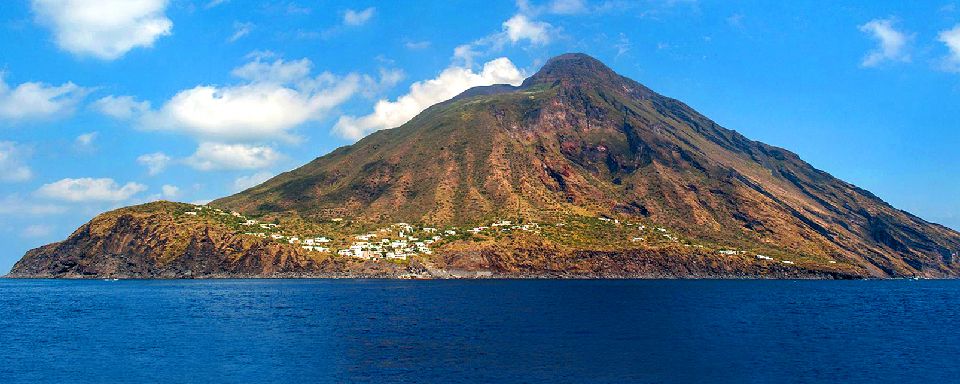
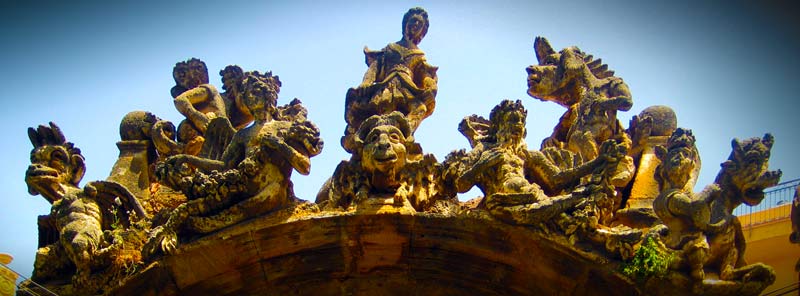
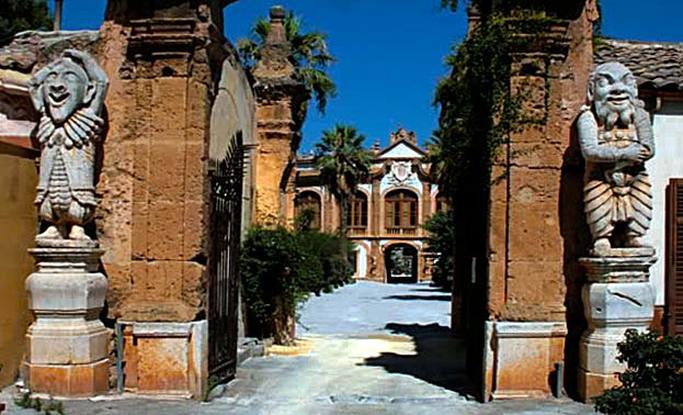
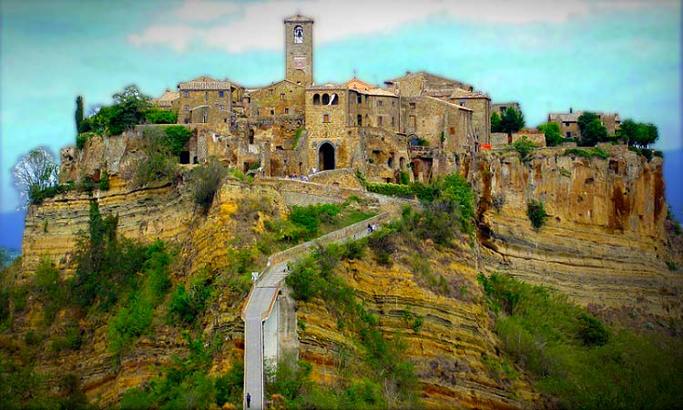
 RSS Feed
RSS Feed
